Best telescopes 2025: Explore planets, galaxies and beyond
Now that the nights are getting longer, it's the perfect time to start looking for your next telescope.
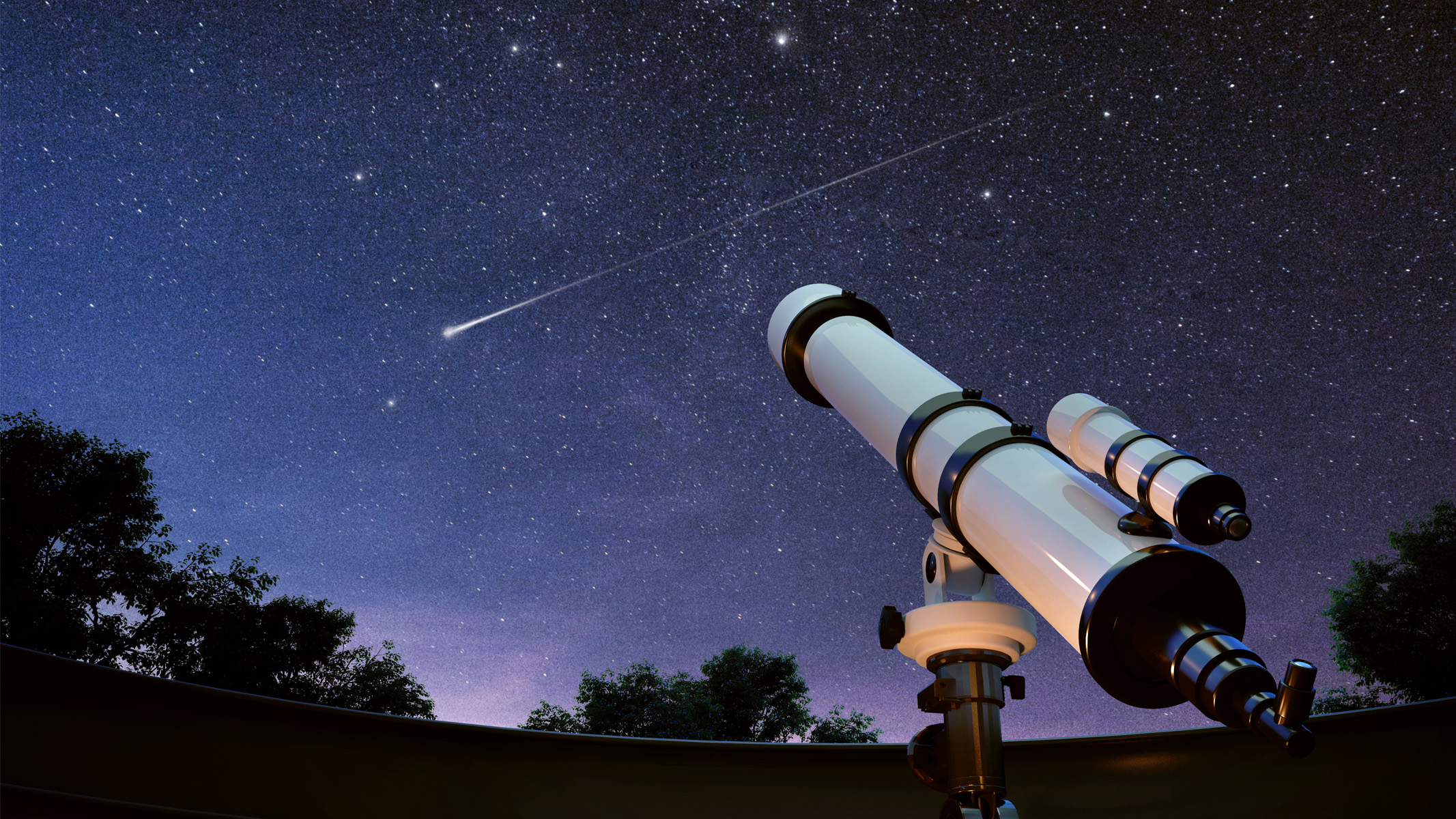
Owning one of the best telescopes allows you to gaze at the wonder of the night sky in unparalleled detail. Binoculars are great if you want something super small and portable, but if you want to look further afield at the planets and deep sky objects, you'll need a telescope.
We've rounded up our picks of the best telescopes on the market, including small and portable scopes for beginners alongside bigger aperture telescopes for more seasoned users. We've also featured some of the best smart telescopes for those of you who enjoy playing with tech.
If you're a beginner, the next two supermoons (December 4 and January 3) are a great target. Plus, now that we're heading towards winter, the planets are slowly returning to the evening sky.
Best telescopes we recommend in 2025
Why you can trust Live Science
Best telescope overall
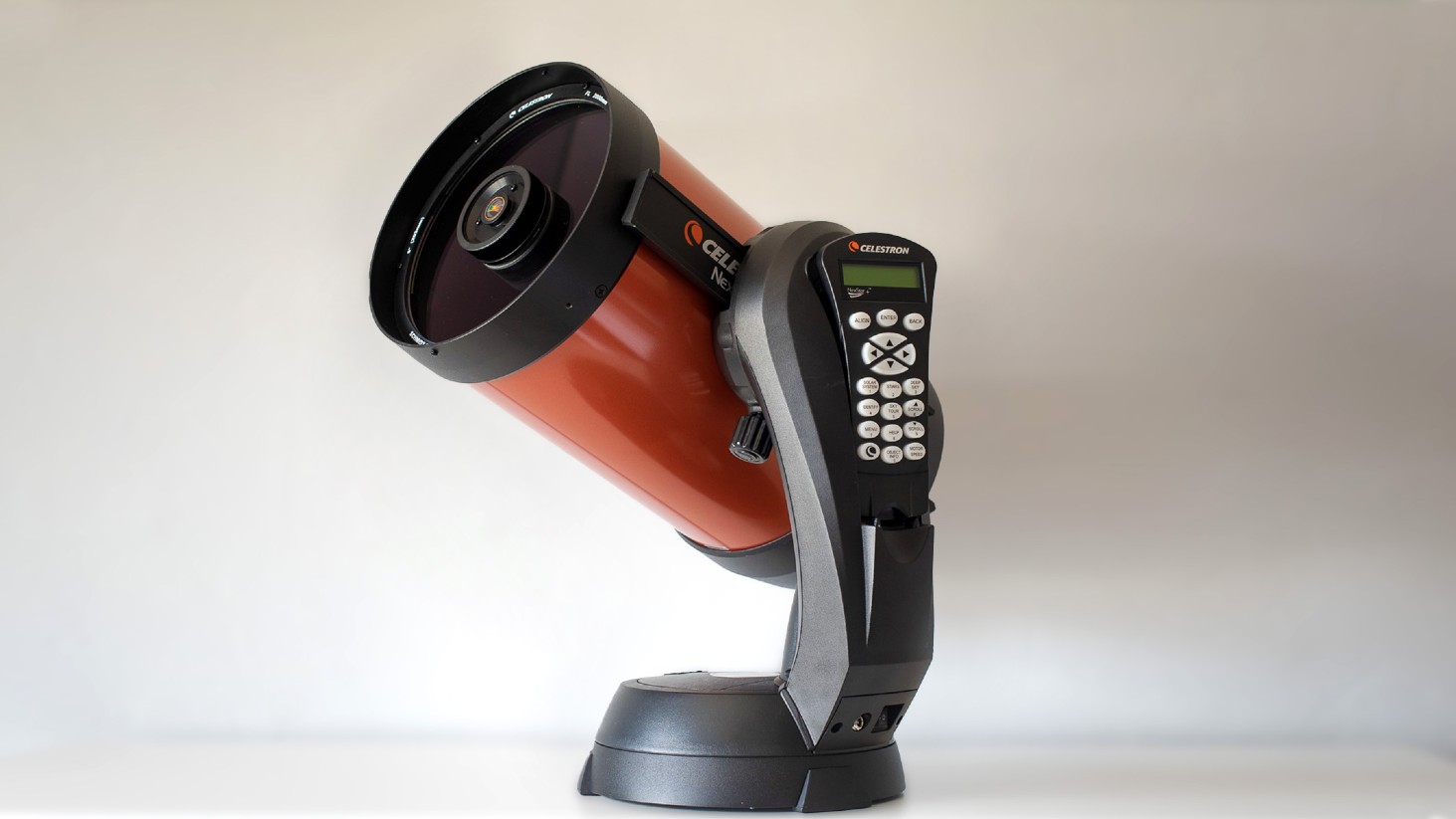
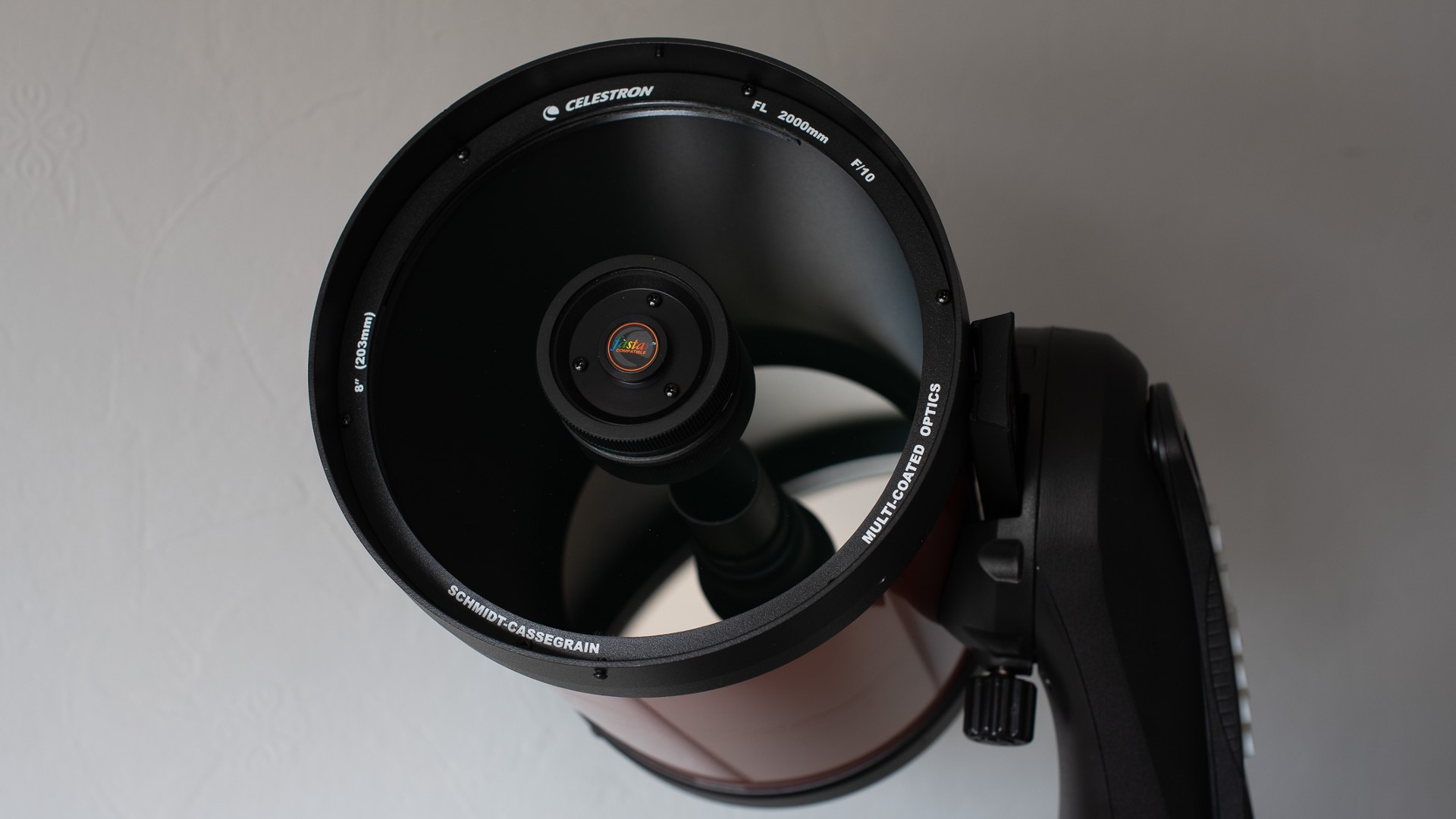
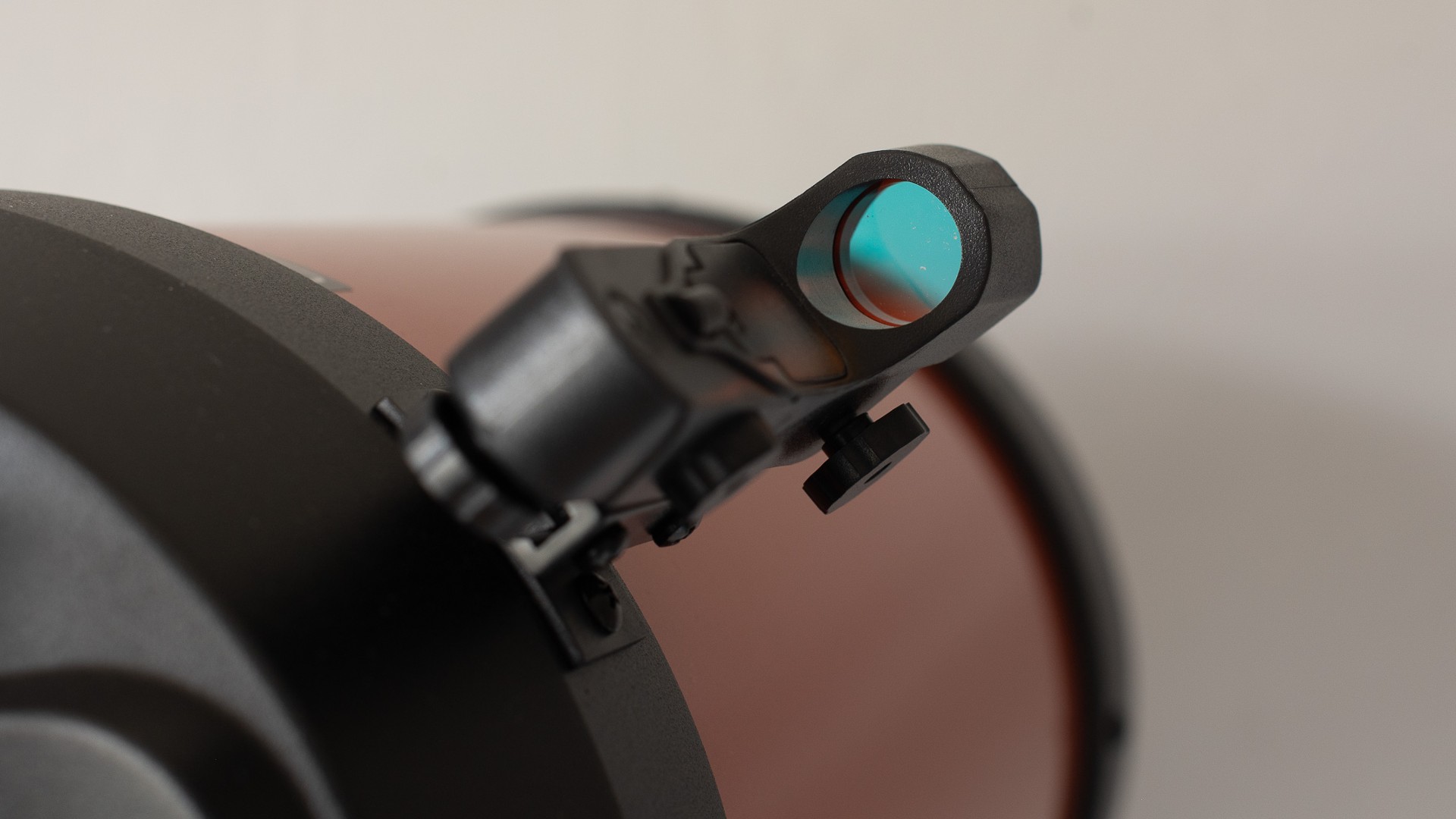
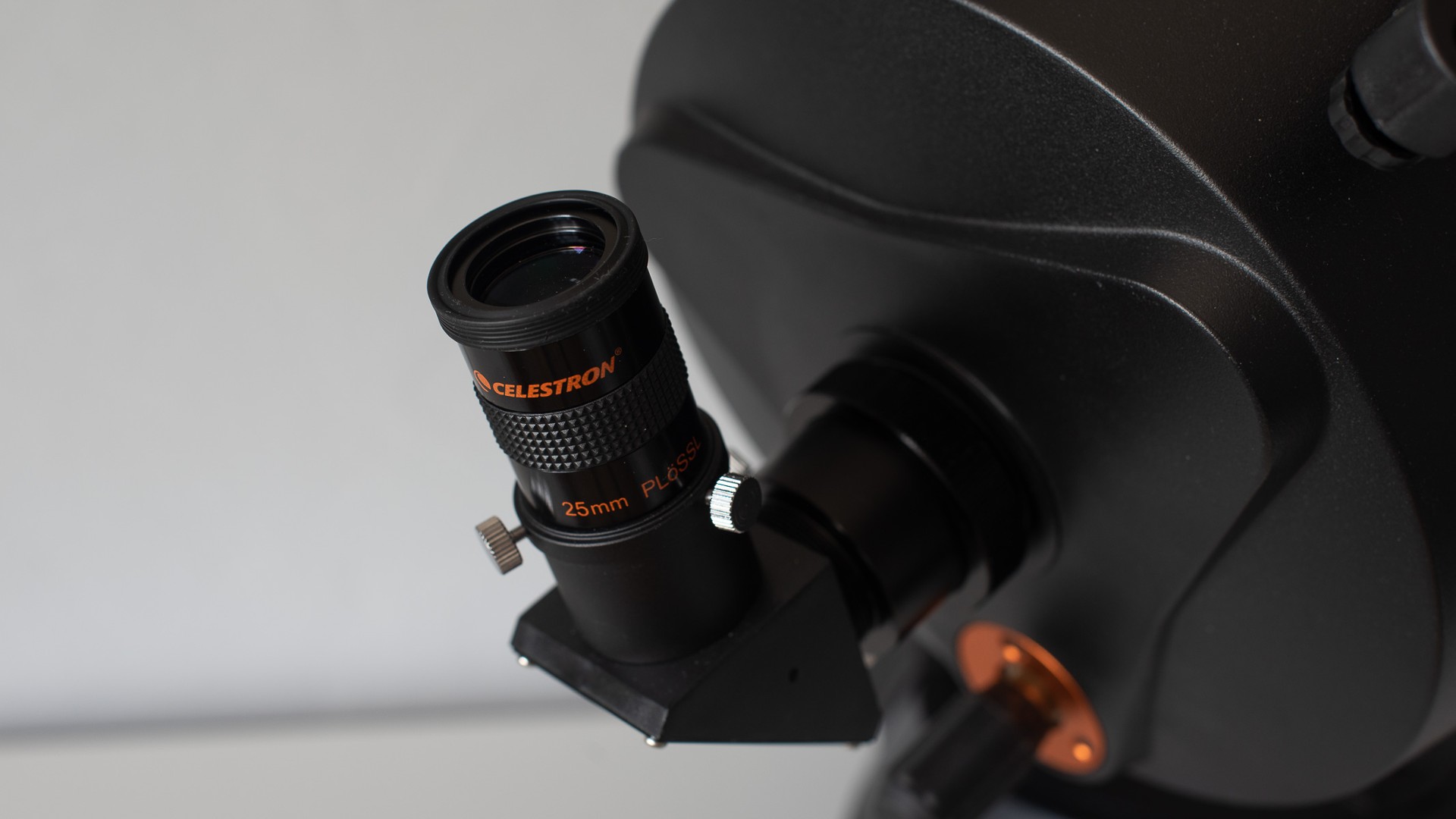
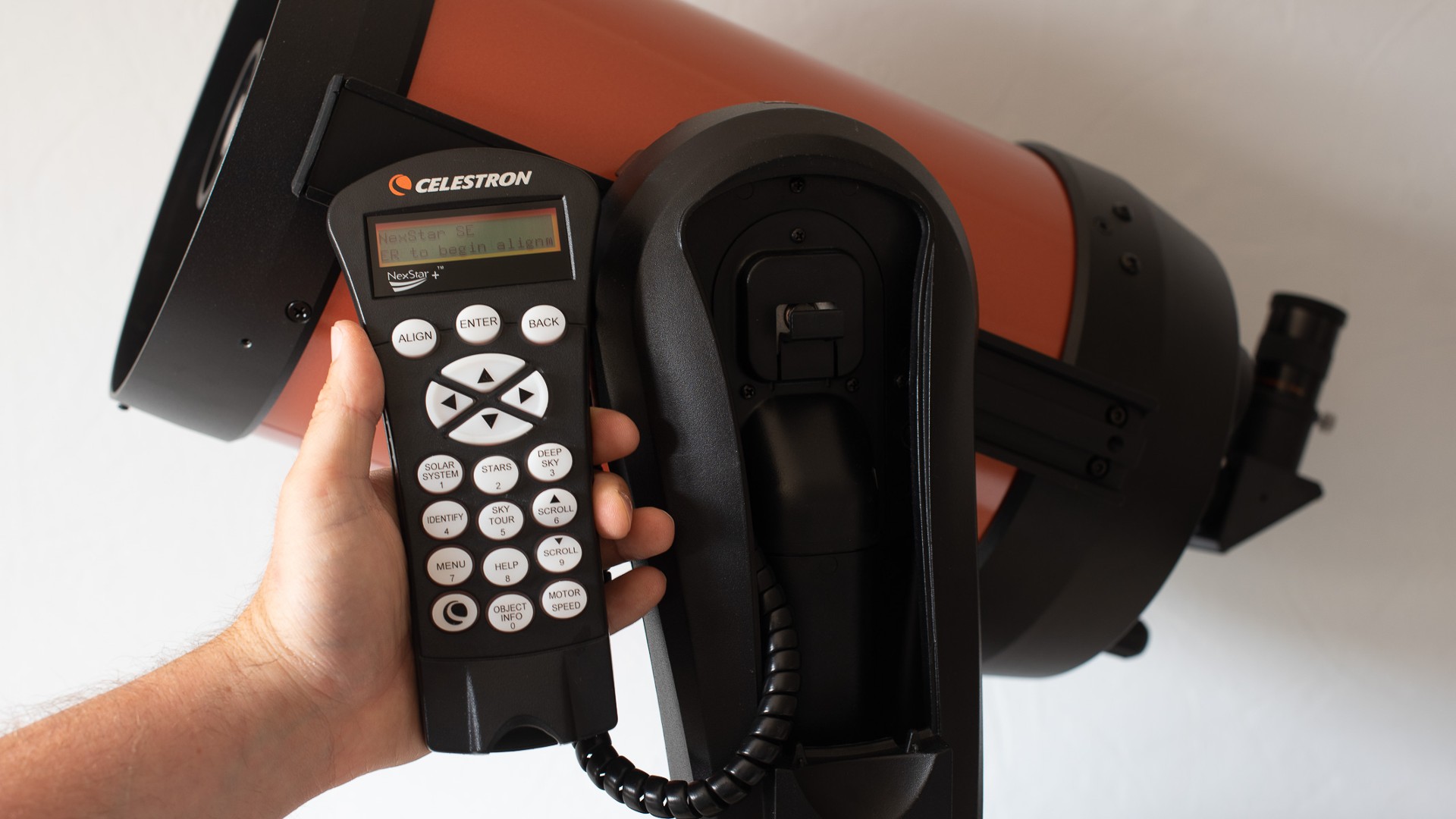
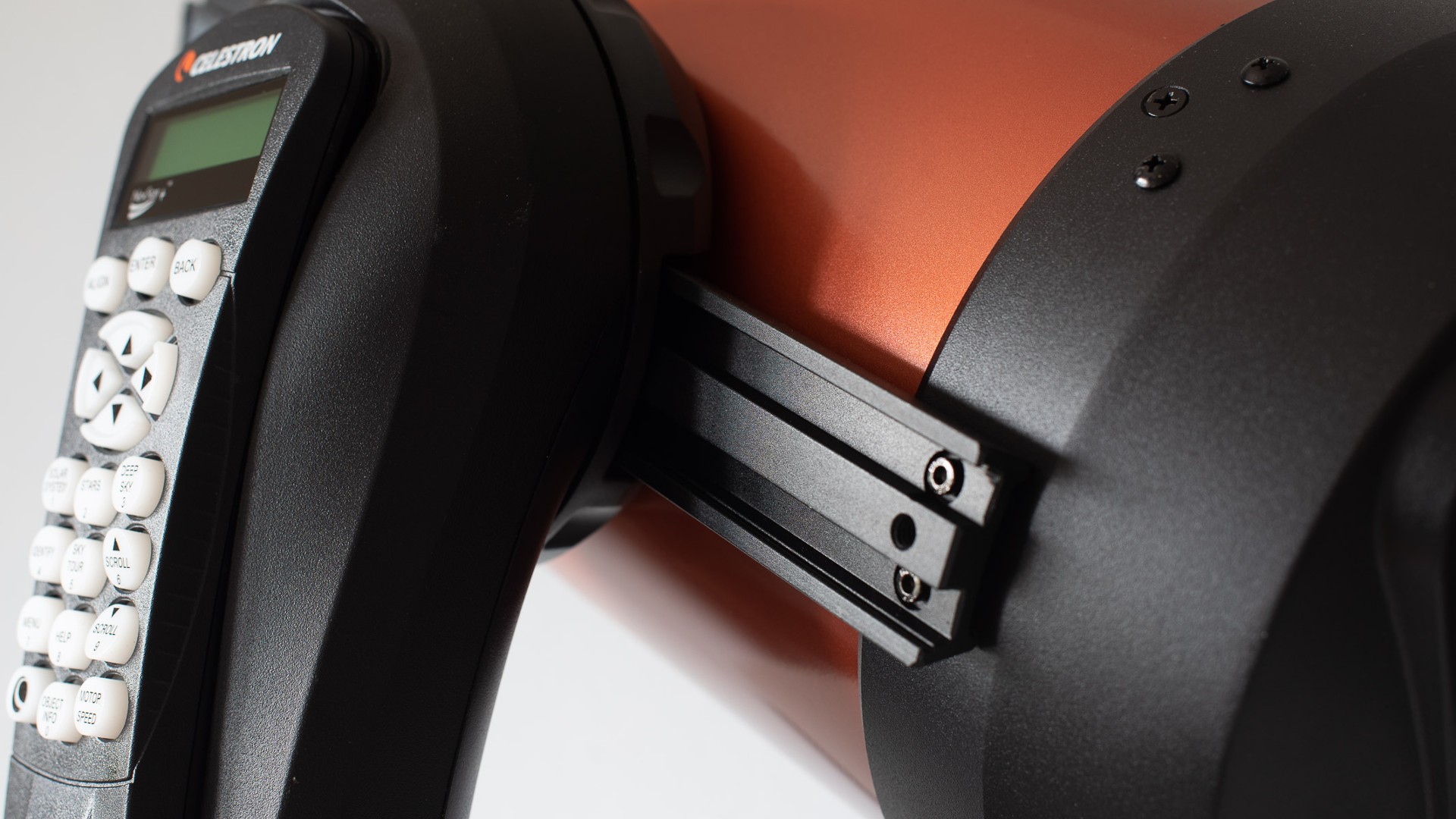
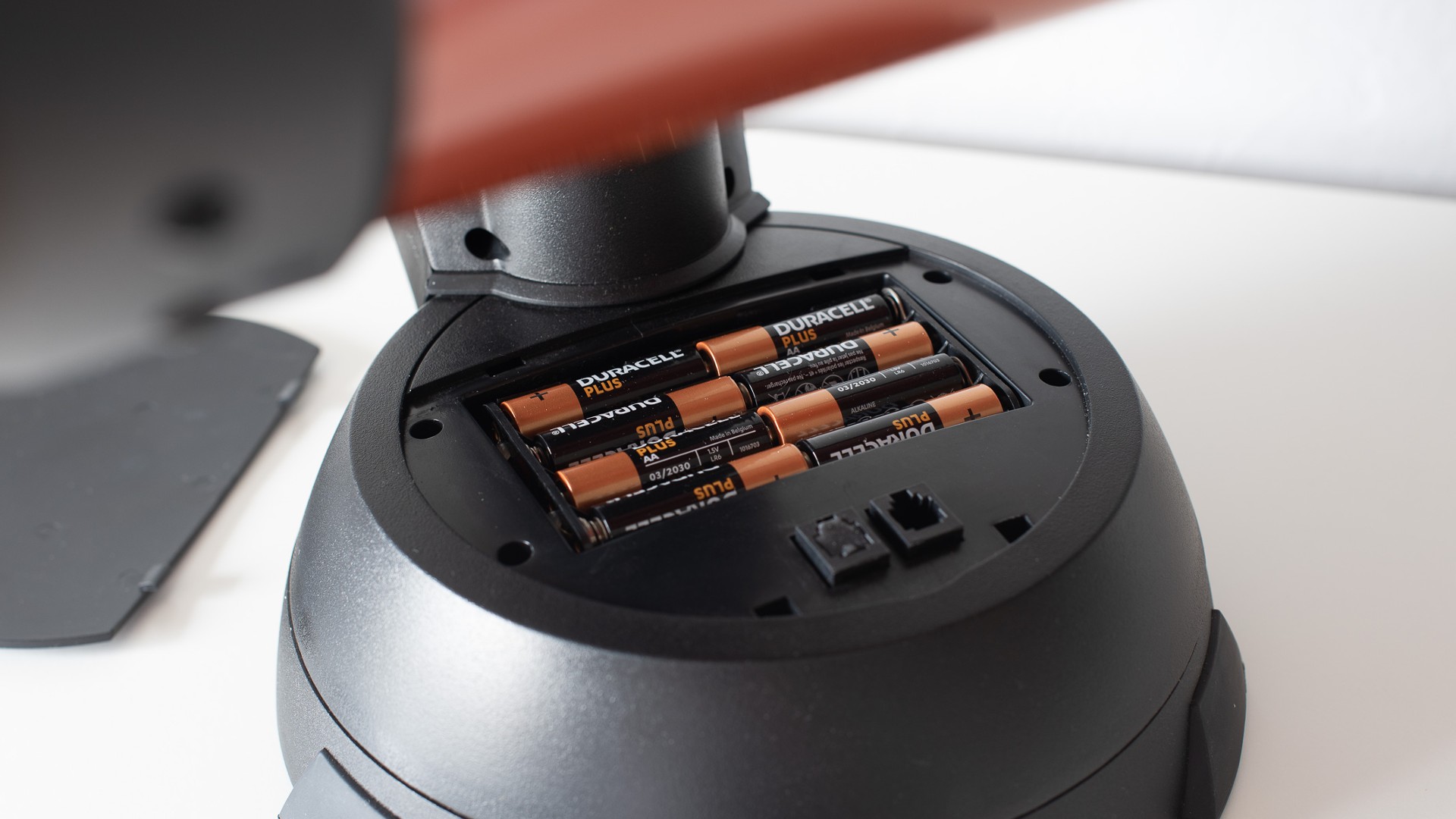
Specifications
Reasons to buy
Reasons to avoid
✅ You want a long-term investment: This is a telescope that will last you for decades.
✅ You want to see planets and deep space: While some telescopes are better for viewing either deep space or planets, this one is great for everything.
❌ You're a beginner: It's probably a little advanced for beginner astronomers at first. We'd recommend the Celestron Inspire 100AZ for beginners.
❌ You want something rechargeable: It uses 8 x AA batteries to work which could get expensive — you could always invest in rechargeable batteries though.
🔎 Celestron NexStar 8SE: Legendary astronomy performance in a neat little package, the Celestron NexStar 8SE Computerized Telescope gives ultra-bright, clear views of the universe. ★★★★½
Back in the 1980s, Celestron made big waves among astronomers with their orange-tubed Schmidt-Cassegrains and, 40-something years on, the NexStar 8SE is now known as the 'world's most beloved telescope'. Aside from its classic orange tube, one of the main design features is its clutter-free space and compactness.
This is our favorite of all telescopes due to its compact catadioptric design which combines technology from refractors and reflectors to deliver a powerful view of the cosmos at a fraction of the weight and size, as we mentioned in our Celestron NexStar 8SE review.
Design: Superbly sharp and bright thanks to the 8-inch aperture and powerful with a focal length of 2032mm, the NexStar 8SE sits atop a strong, sturdy motorized single fork arm mount which can be controlled via either the hand controller or through a computer by use of its ethernet connection.
Performance: We tested it out for observations of the moon using the included 25mm eyepiece, and found that every single part of the lunar surface had brilliant quality and shone brightly. The craters were sharp, shadows stood out and we were even able to find distinct areas such as the landing site of Apollo 11 in the Sea of Tranquility.
We did find on occasion that the star alignment could be a little temperamental, taking two or three times before the telescope would align correctly, but once it was set in, it tilted and panned smoothly toward the subject.
Functionality: We found it an absolute dream to set up, and the 1.25-inch star diagonal makes observing very comfortable with the stock tripod. The large focus knob is easy to grip, giving us reasonable focus control with plenty of range. We also found the red dot finderscope worked well, although the telescope quickly eats up the 8 required AA batteries, so we'd recommend investing in some rechargeables.
It's great for upgrading too, with serious astronomers able to go their whole skywatching lives with just this telescope provided they invest in some tasty accessories. Most will update certain items like image diagonals and seek out different eyepieces so a myriad of objects are easy to view and others will update the tripod, though the one that ships straight out of the box is certainly sturdy enough.
The 8SE requires a little more investment than others on this list though, so beginners may be put off but at this premium price, you get a premium product.
- Read our full Celestron NexStar 8SE review
Attributes | Notes |
|---|---|
Design | Compact and clutter free. |
Performance | Stunning clarity thanks to excellent optical characteristics. |
Functionality | Requires 8 x AA batteries. |
Best telescope for beginners
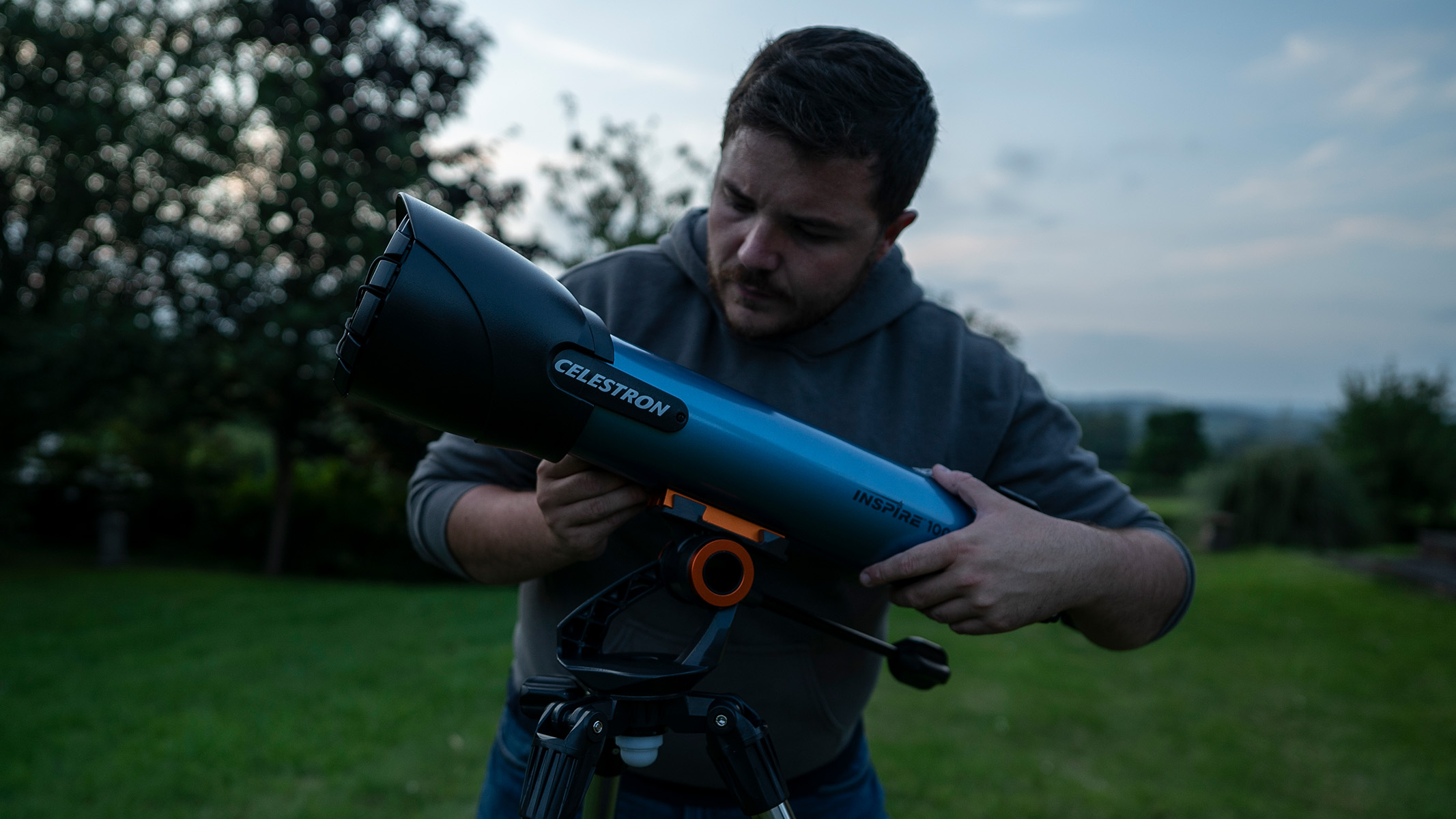
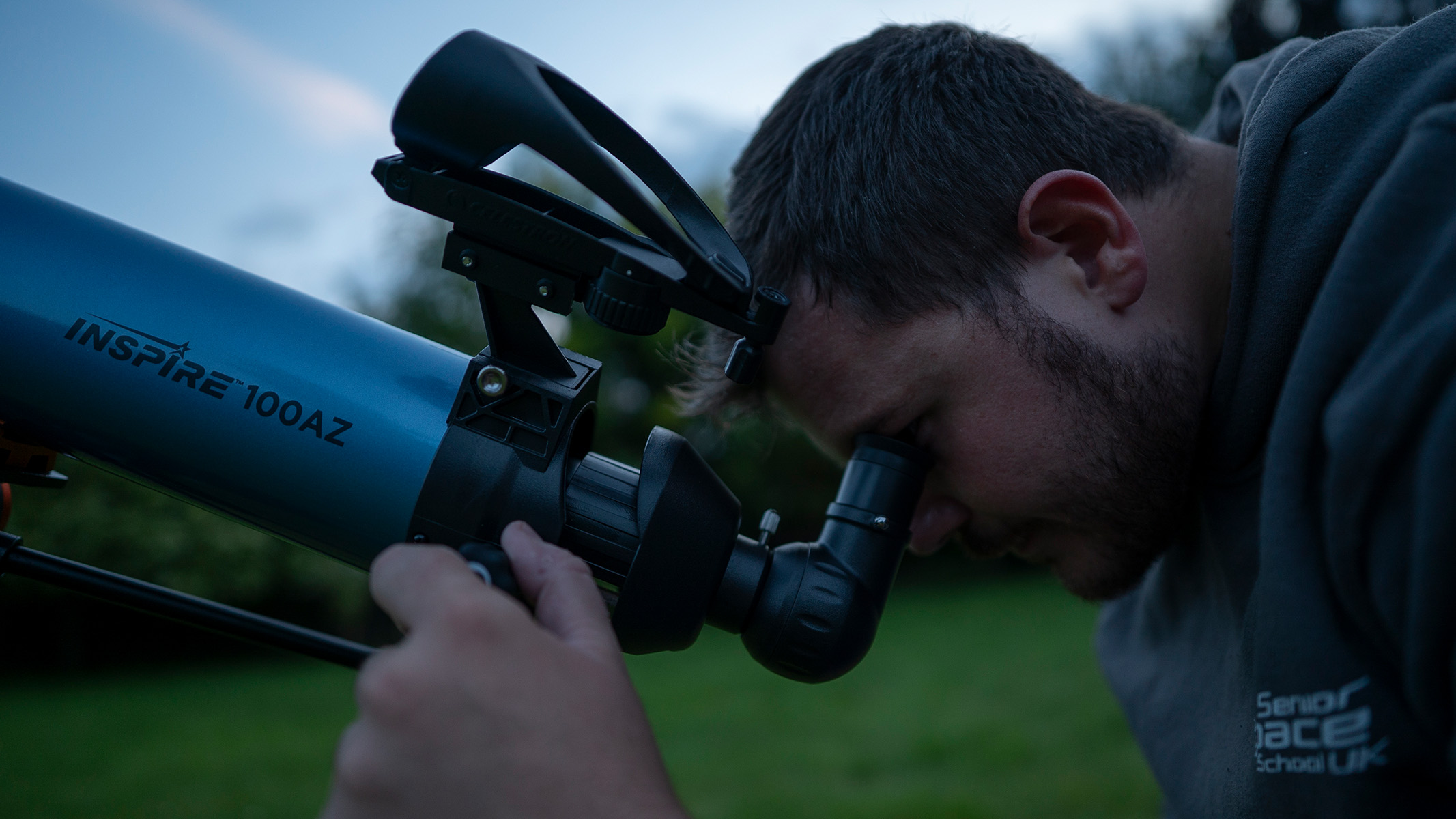
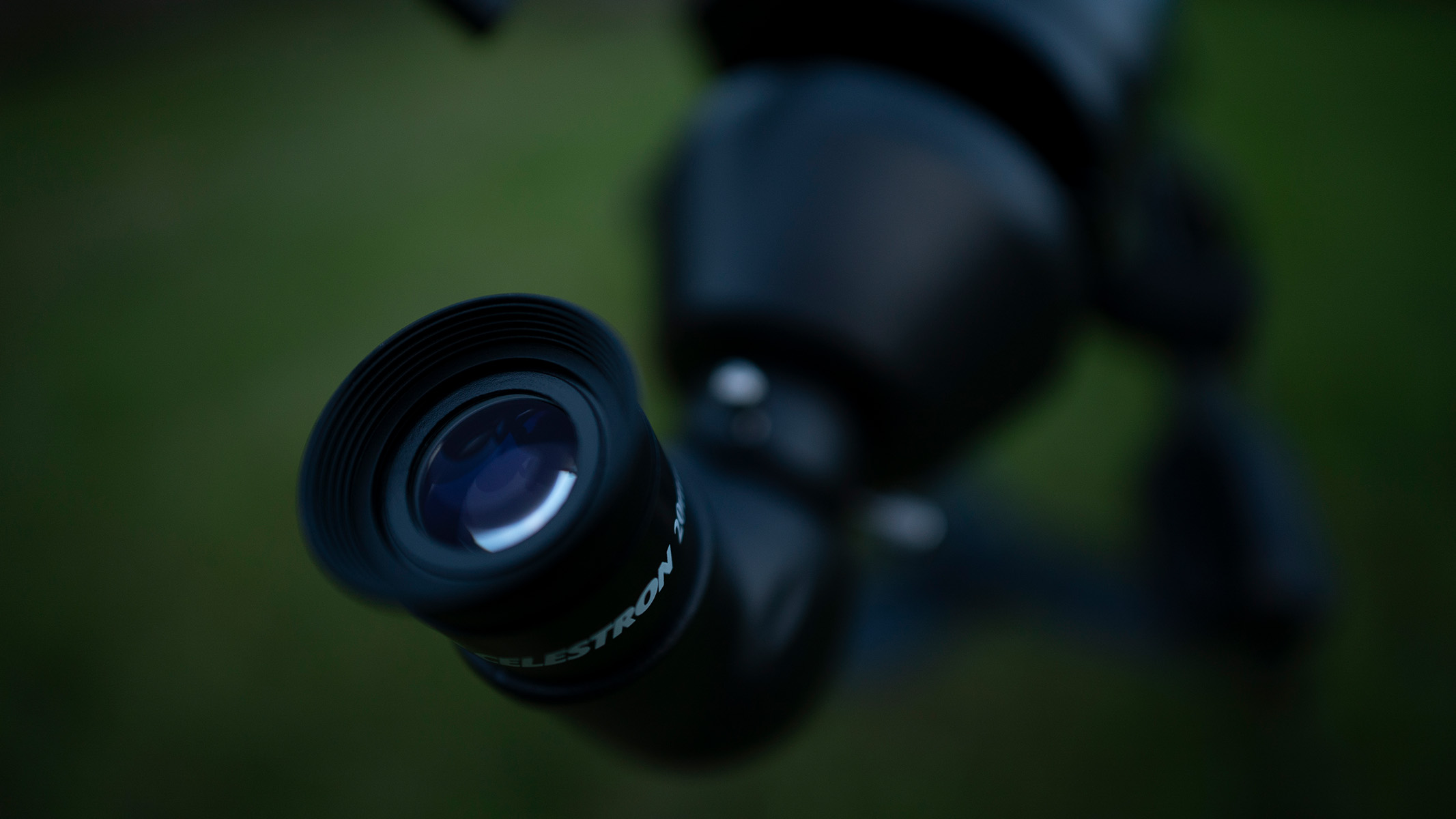
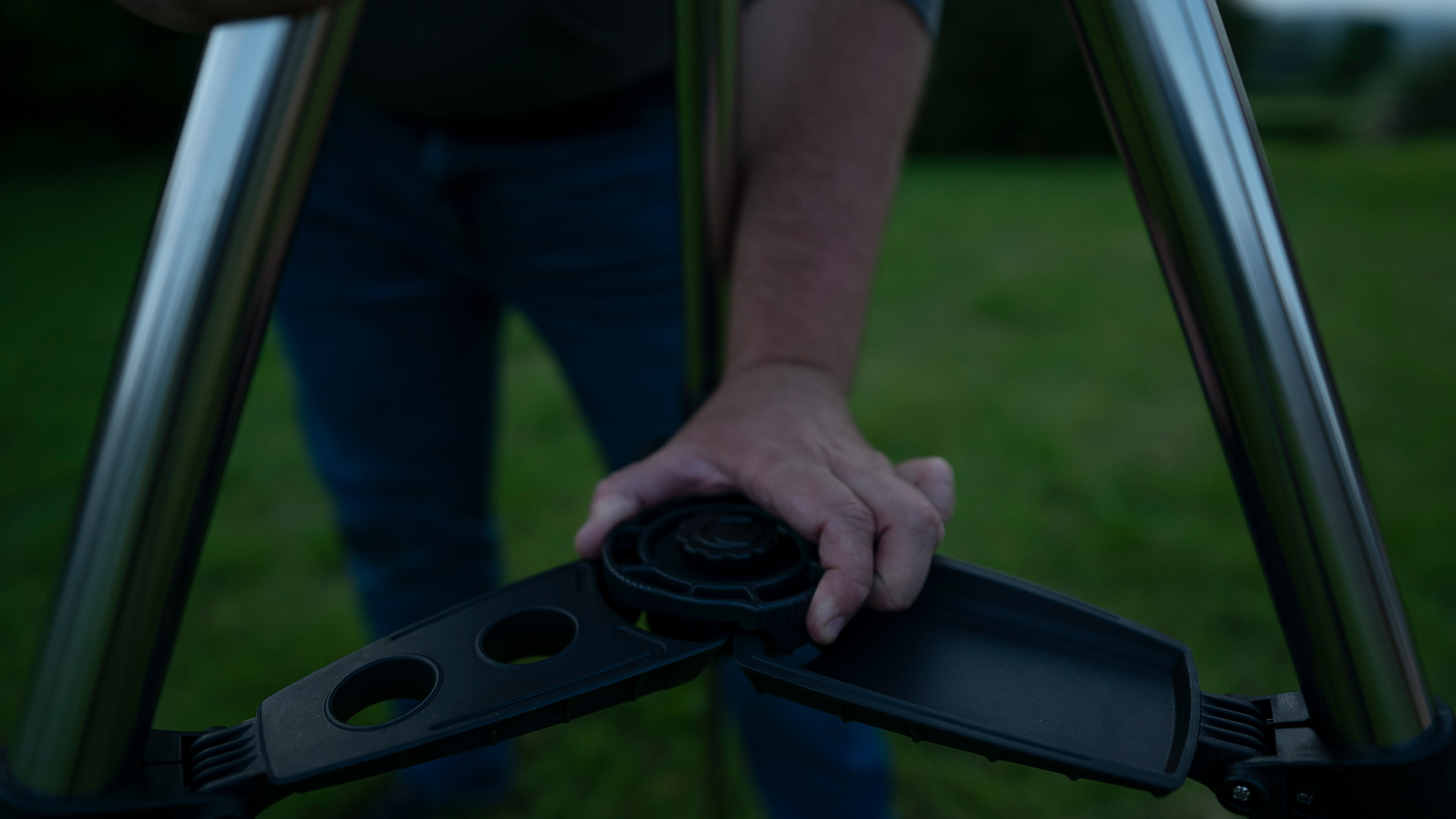
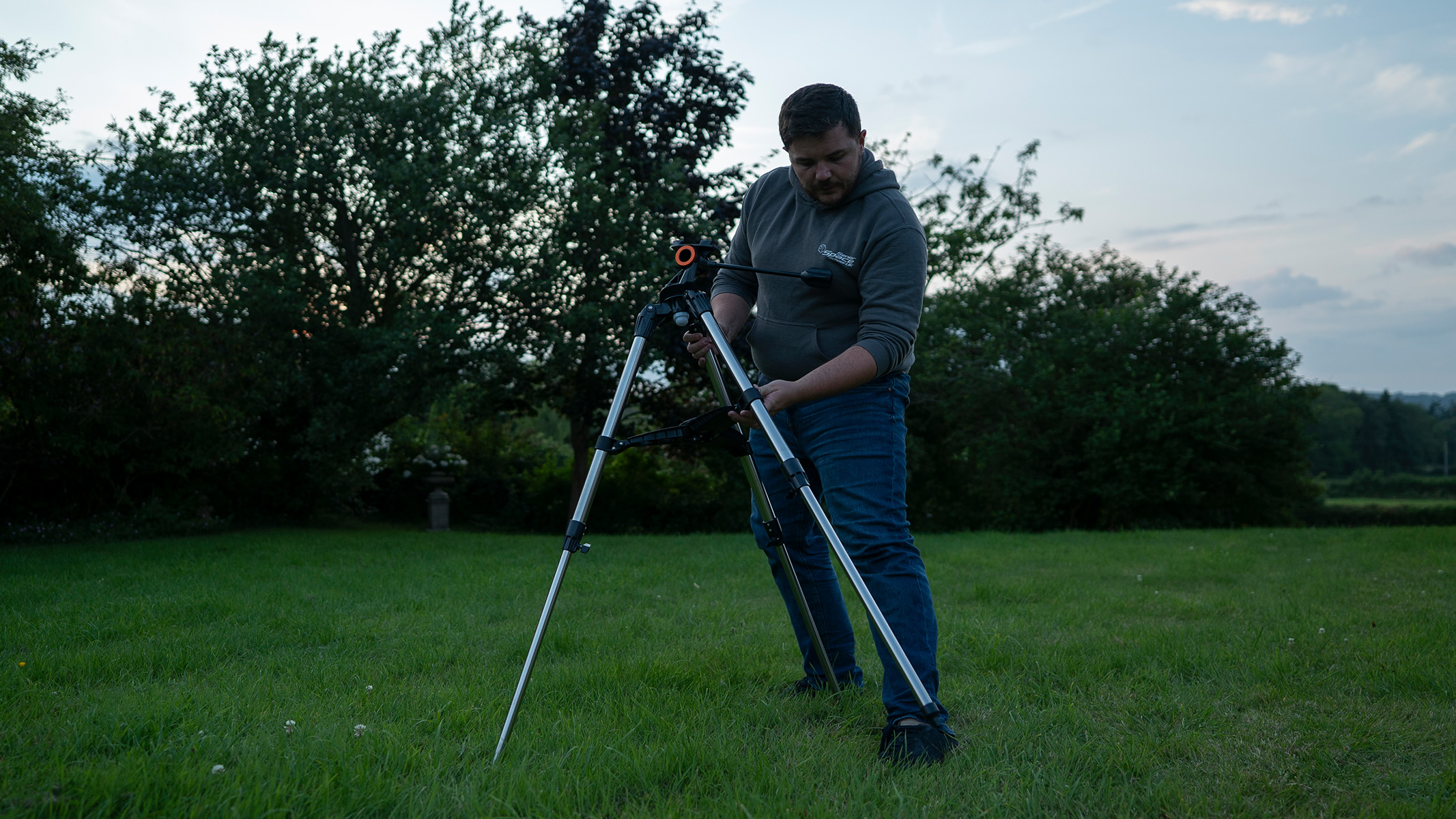
Specifications
Reasons to buy
Reasons to avoid
✅ You want to take photos on your smartphone: The lens cap turns into a smartphone holder so you can take astrophotos.
✅ You're buying your first telescope: We think it's the best telescope for beginners in terms of optical performance and value for money.
❌ You're an experienced astronomer: It's aimed more towards beginners, so it likely wouldn't be enough for more experienced users. If you've outgrown your beginner scope, consider moving on to something like the Celestron AstroMaster 130EQ.
❌ You want to view deep-space objects: It lacks the wow factor for deep-sky viewing, it's better for lunar and planetary views. If you want an advanced scope that can view everything, we'd recommend the Celestron NexStar Evolution 9.25.
🔎 Celestron Inspire 100AZ: An ideal telescope for budding astronomers — it's easy to set up and take down, and has everything you need to get started. It even features a neat little smartphone adapter so you can experiment with basic astrophotography. ★★★★
Beginner telescopes need to strike the right balance between affordability and the appropriate level of optical quality for someone new to the hobby. Newcomers likely won't want to spend thousands of dollars on the best telescopes if they aren't sure they'll stick with the hobby, but they also don't want to skimp on quality. We think the Celestron Inspire 100AZ is the perfect balance and would make a brilliant beginner telescope.
Design: With its 4-inch/100mm aperture and 660mm/26-inch focal length, the Celestron Inspire 100AZ is a telescope suited to beginners wanting to observe planets and the moon at home in their backyard. It sits on a simple alt-azimuth mount, with a panhandle to achieve the precise position you want to lock in.
It's quite lightweight at 20 lbs / 9.07kg, although the long tube and big tripod give it a fairly large footprint if you want to transport it anywhere. It's not impossible, though, as it can be assembled and disassembled easily, so we think you could definitely load it into your vehicle to take it to dark-sky locations.
Performance: During our Celestron Inspire 100AZ review, we were able to view Saturn and Jupiter with plenty of detail and brightness through the 25mm eyepiece (not so much the 10mm, which was blurry in comparison). We noticed some chromatic aberration around brighter subjects like Jupiter in the form of a purple halo, although we didn't think it was as distracting as it is on some of the other cheaper rival telescopes. We noticed the same thing when we pointed it at the moon — we can't pretend this false color isn't there, but it certainly won't ruin or detract from the experience for beginners who are new to the hobby.
We also thought it did fairly well when we moved through the cosmos, showing Andromeda (M31), the Orion nebula and some of the brighter star clusters, although it lacks the aperture for proper deep-sky exploring.
Functionality: Cleverly, Celestron has included an integrated smartphone adapter into the dust cap, so astronomers can capture images of the moon and planets, or use the Celestron app to help guide them to nearby constellations and deep sky objects if they are not already familiar with the night sky.
We found it easy to set up, although we thought the alt-azimuth mount lacked precision and was only average quality. Still, beginners likely won't be put off by this. It's also worth noting that because of the telescope's hood design, it can't accommodate solar filters, so you should never use this telescope to observe the sun or solar eclipses.
- Read our full Celestron Inspire 100AZ review
Attributes | Notes |
|---|---|
Design | Lightweight at 20 lbs / 9.07kg but not particularly compact. |
Performance | Some chromatic aberration around bright subjects, but gives bright, detailed images to please beginners. |
Functionality | Easy set-up and take-down, includes smartphone adapter for basic astrophotography. |
Best mid-range telescope
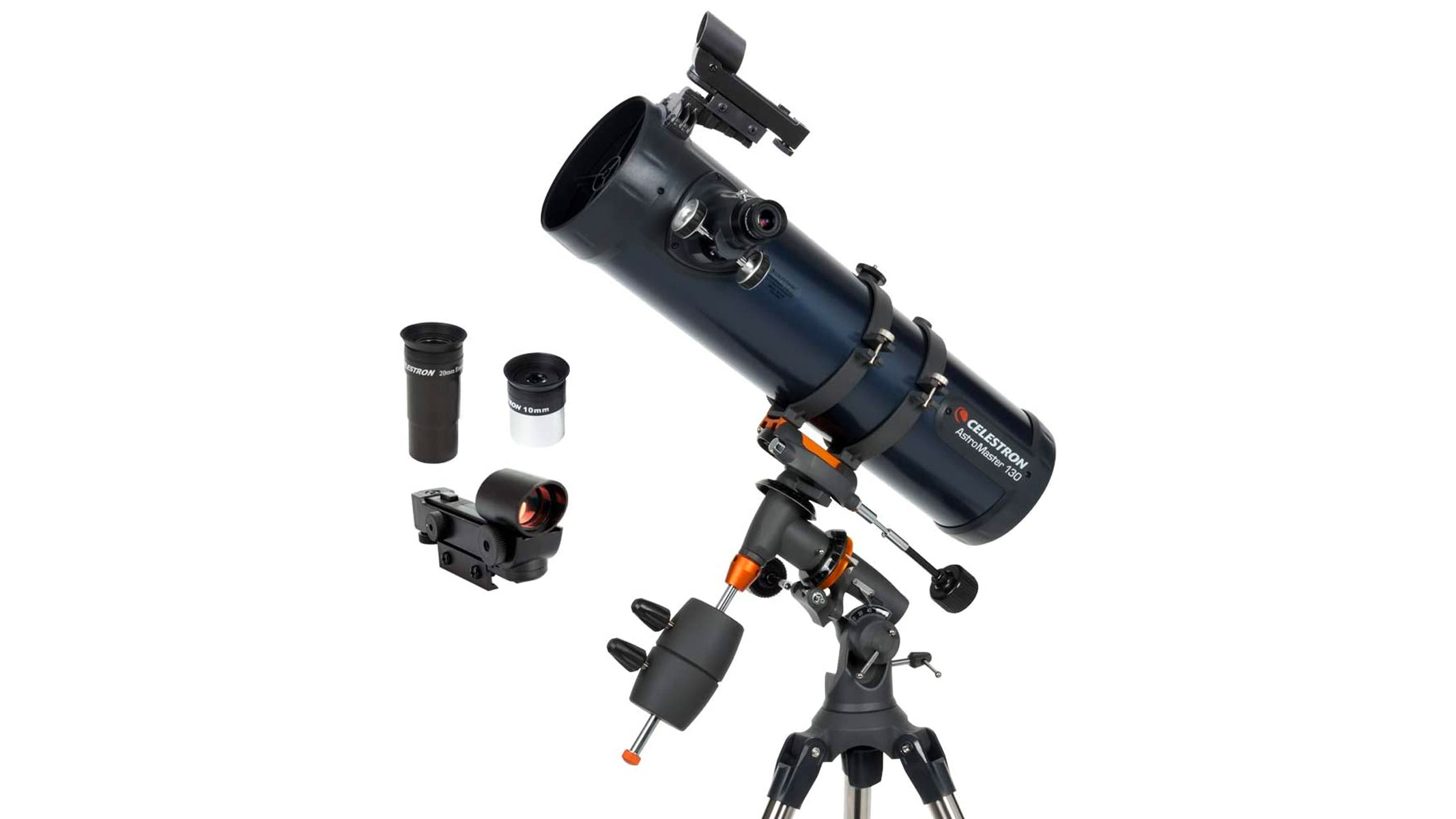
Celestron AstroMaster 130EQ
Our expert review:
Specifications
Reasons to buy
Reasons to avoid
✅ You want to take long exposure images: The motor can track the Earth's movement to take multiple long exposure images to stack.
✅ You want to view the Moon: It provides clear, crisp views of the moon, but wouldn't be best suited for deep space viewing.
❌ You're a beginner: Although the price is beginner-friendly, the mount is not. Try the Celestron Inspire 100AZ.
❌ You want GoTo technology: If you want a telescope that can automatically slew to certain celestial objects, go for something like the Celestron Astro Fi 102.
🔎 Celestron AstroMaster 130EQ: Ideal for intermediate users, the equatorial mount enables you to take multiple long-exposure images for beautiful astrophotography. ★★★★
The Celestron AstroMaster 130EQ is a great choice for those who have outgrown their beginner telescope and want to move up to the next level. It's not as expensively priced as some of the more advanced scopes, and it's primarily aimed at intermediate users due to the equatorial mount being a little fiddly for beginners.
Design: The quick and easy no-tool setup of the Celestron AstroMaster 130EQ makes it a great option for astronomers who want to get going quickly. It comes with an accurate equatorial mount which utilizes counterweights for steadier and more precise views. Because of this, it's not necessarily suitable for beginners, though if you have the patience to learn and get to grips with it, you'll enjoy it once you get used to it.
Performance: We haven't reviewed the Celestron AstroMaster 130EQ yet so we can't give any first-hand accounts of its performance, however, users have stated that they're happy with it as a beginner telescope (once you get used to the mount), and that the clarify and magnification are both excellent, although locating objects other than the Moon proved to be somewhat challenging. It seems like while it's good for beginners in theory, the mount issue and knowledge of the night sky needed to get going, it may be a better option for those with a little more experience than total beginners — or anyone technically minded who enjoys a challenge.
Functionality: The motor is superb for tracking celestial objects as the Earth rotates through the night, and with a camera adapter, it's easy to take long exposure images of the night sky. By tracking a subject with the Earth’s rotation, users can image a subject tens or hundreds of times to attain the dark and light frames required for astrophotographic post-processing.
- Into astrophotography? Read our best cameras for astrophotography guide
Attributes | Notes |
|---|---|
Design | Sturdy steel tripod with accessory tray. |
Performance | Motor is superb for tracking celestial objects. |
Functionality | Wide 130mm aperture. |
Best telescope for astrophotography
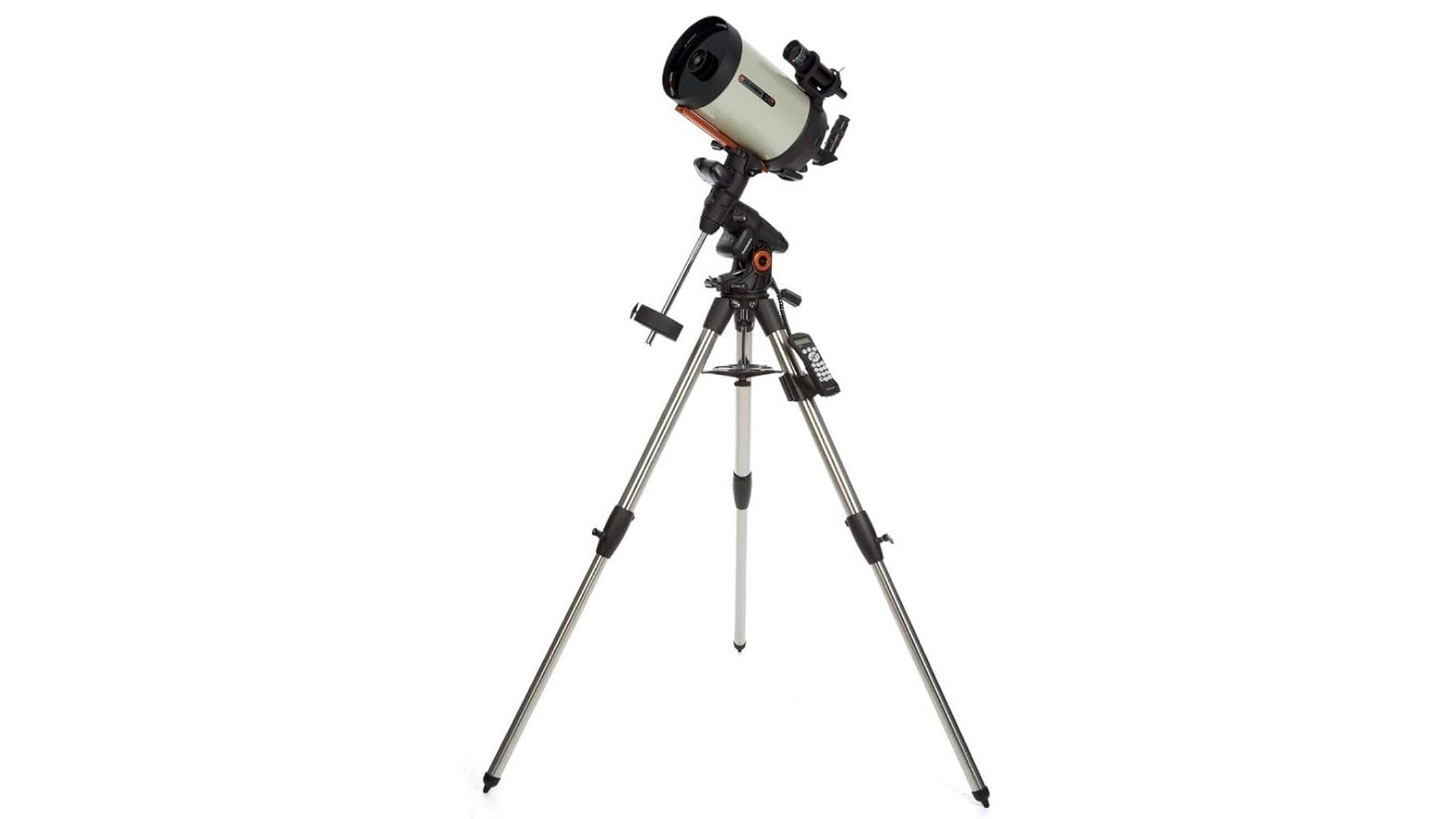
Celestron Advanced VX 8 Edge HD
Our expert review:
Specifications
Reasons to buy
Reasons to avoid
✅ You want to travel with it: It's lightweight and rugged, meaning it won't get damaged easily when you transport it around.
✅ You want to look at a variety of subjects: With the appropriate eyepieces, you can see the moon and planets as well as deep-space objects.
❌ You want to do long-exposure deep-sky photography: For this purpose, you'll want to invest in a sturdier mount.
❌ You have no knowledge of the sky: Setup requires some knowledge of the sky, so beginners may find it somewhat daunting. If this sounds like you, the Celestron Astro Fi 102 is a decent, beginner-friendly GoTo.
🔎 Celestron Advanced VX 8 Edge HD: For serious amateur astronomers, this is an appealing telescope. The mount works well for everything except long-exposure deep-sky photography and there's plenty of room for growth with accessories. If you want to do long-exposure deep-sky photography, you'll need to invest in a sturdier mount. ★★★★★
It's one thing to simply look at celestial objects through your telescope, but photographing them is another. If you don't want a smart telescope that can take its own images, you'll want to make sure the telescope you choose can support astrophotography. We think the Celestron Advanced VX 8 Edge HD is one of the best there is for astrophotography, although if you want to do very long exposure photography we'd suggest investing in a better mount.
Design: The 40mm eyepiece supplied with the kit is ideal for observing star clusters, galaxies and nebulas, but if you want to invest in more eyepieces to get the most out of the instrument, we'd recommend a 20mm for general purpose and 10mm for viewing the moon and planets.
The Advanced VX mount head is both lightweight and relatively rugged compared to its competitors, which is advantageous as it's not easily thrown out of adjustment.
Performance: The Celestron Advanced VX 8 Edge HD is a fantastic telescope for viewing all types of celestial objects, including the moon, planets and deep sky objects like galaxies and nebulas. With Celestron's EdgeHD technology, images are clearer and sharper than many other telescopes in the same class, particularly around the edges of the field of view. We also found no optical distortion or false color, which is a huge advantage when taking images of the night sky.
When you attach a smartphone, DSLR, mirrorless or astro-camera to the telescope, you can take multiple images of celestial subjects and stack them together in image-editing software to create stunning images of the night sky that you'd never be able to see with the naked eye — it's a great option for photographers with a decent arsenal who want to get started with astro-imaging.
Functionality: One consideration of this telescope would be the mount, particularly if you want to image deep-sky objects with long exposures. This is mentioned in the Celestron Advanced VX 8 Edge HD review over on our sister site, but due to regular corrections to the mount while in use, you'd need a sturdier mount if you want to shoot long exposures. If you want to skip the Advanced VX mount and go straight for something heftier, we'd recommend the Celestron CGX or Losmandy GM8 mount.
- Head over to our sister site to read a full Celestron Advanced VX 8 Edge HD review
Attributes | Notes |
|---|---|
Design | Lightweight, rugged computerized mount. |
Performance | Excellent optics, and it finds and tracks objects reliably. |
Functionality | Impressive views of all types of celestial objects. |
Best advanced telescope
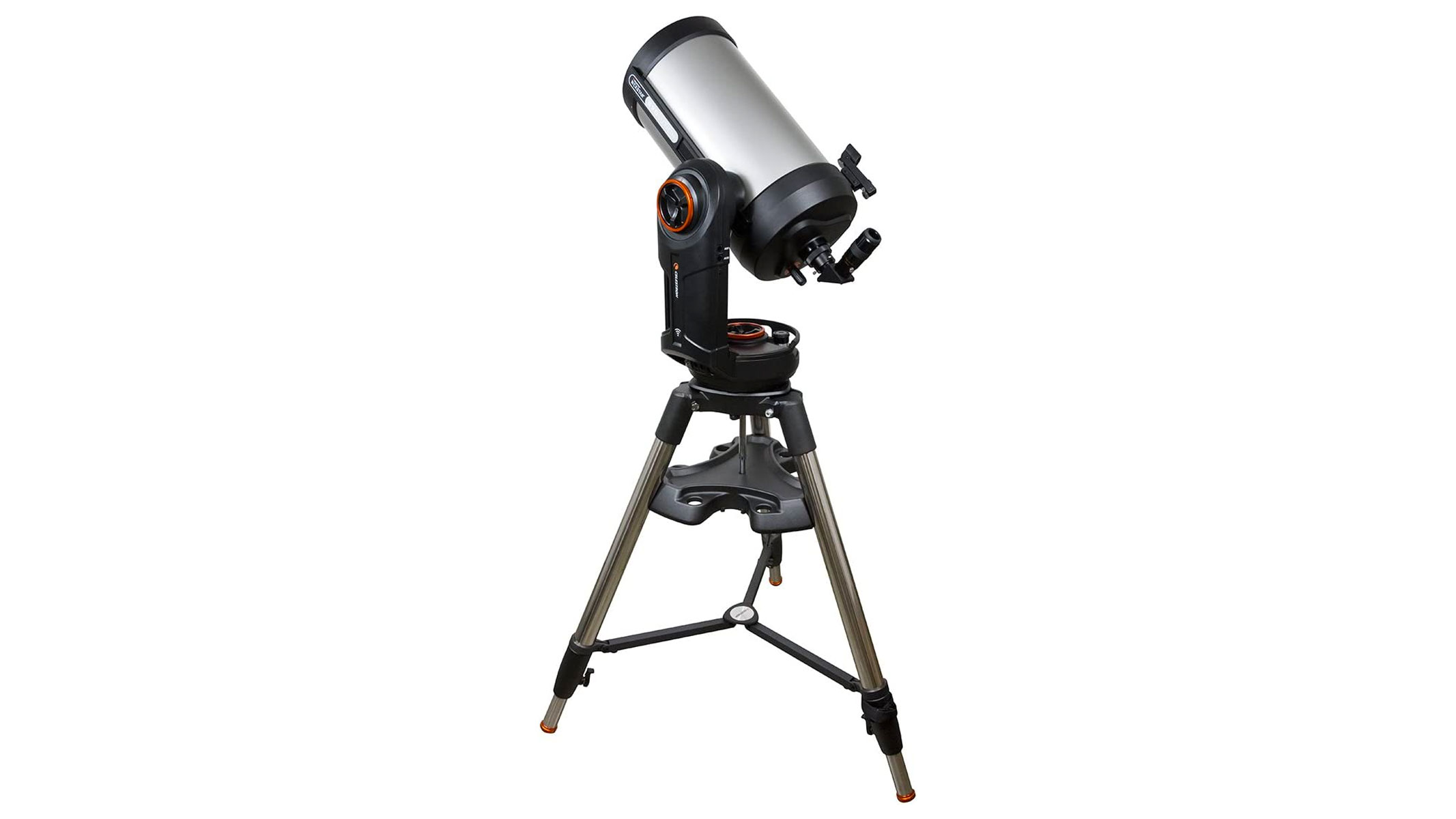
Celestron NexStar Evolution 9.25
Our expert review:
Specifications
Reasons to buy
Reasons to avoid
✅ You want GoTo technology: With its integrated WiFi and SkyPortal app, it can effortlessly locate and track any celestial object visibly in the sky based on your time and location.
✅ You want an all-rounder: While many telescopes are good for either planetary views or deep space objects, this scope can view a whole host of celestial objects near and far.
❌ You want something lightweight: It's the heaviest telescope setup on this list, so check out the comparison table at the bottom of the page to compare the weight against the other options in this guide.
❌ You're a beginner: This is a very advanced telescope, not to mention it's likely way out of budget for beginners. If you're new to the hobby, we think the Celestron Inspire 100AZ would be much better suited.
🔎 Celestron NexStar Evolution 9.25: More suited to passionate and advanced skywatchers, this impressive GoTo scope can give a comprehensive tour of the universe. ★★★★½
Advanced astronomers who want an impressive piece of kit that can give them a comprehensive tour of the universe in a small package, with GoTo technology, built-in WiFi, a rechargeable battery and can view a whole host of celestial objects cannot go wrong with the Celestron NexStar Evolution 9.25.
Design: This telescope is heavy and durable, meaning it’ll remain stable even in strong winds when you're out on location, but that also makes it slightly more challenging to transport. It weighs 62.60 lbs / 28.39kg, making it the heaviest total kit weight on this list, so we'd recommend using it from your backyard or somewhere you won't need to carry it far from your car to your location.
Even though it is a very heavy bit of kit, it's fairly compact at 35.12 x 28.5 x 15 inches, and its large 9.25-inch (235mm) aperture and focal length of 9 inches (2350mm) give you a powerful telescope in a small package.
Performance: This Schmidt-Cassegrain is an excellent catadioptric telescope for observing the night sky because it provides clear, sharp images with minimal distortions thanks in part to the StarBright XLT optical coatings.
Its 9.25-inch aperture drinks in the dim, distant starlight and combined with its 2350mm focal length will make short work of even the smallest deep sky objects, and with the correct eyepiece, celestial objects stand out with sharp clarity and striking contrast. It excels at viewing various night sky objects, from planets to deep-sky nebulas and galaxies — it's a fantastic all-rounder. It's also great for long-exposure astrophotography, too.
Functionality: The NexStar Evolution was the first Schmidt-Cassegrain telescope with integrated WiFi, and with the SkyPortal App you can view the night sky in real-time, or display a list of the celestial objects currently visible based on your time and location, then automatically slew to whichever object you choose to view.
It also features a rechargeable lithium-ion (LiFePO4) that gives up to 10 hours of continuous observing (or so they claim), which we think is a welcome change to having to replace AA batteries that feature in many other motorized telescopes — a bugbear we found with the Celestron NexStar 8SE, which we've named as best overall on this list.
- Just starting out with astrophotography? Check out our beginner's guide to astrophotography.
Attributes | Notes |
|---|---|
Design | Bulkier and heavier than other models. |
Performance | Crisp, clear views. |
Functionality | Rechargeable and gives 10 hours of continuous observing. |
Best affordable GoTo telescope
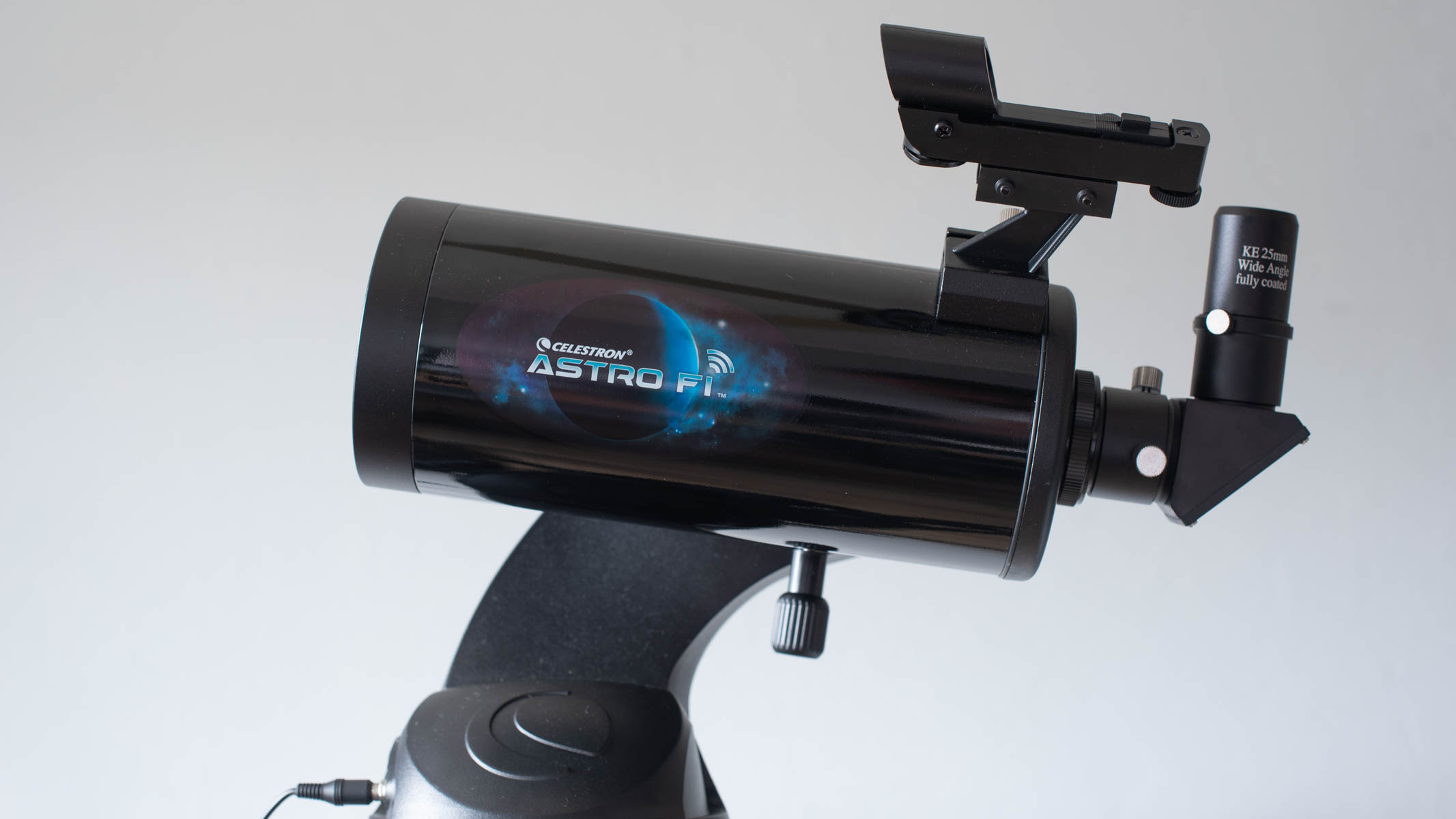
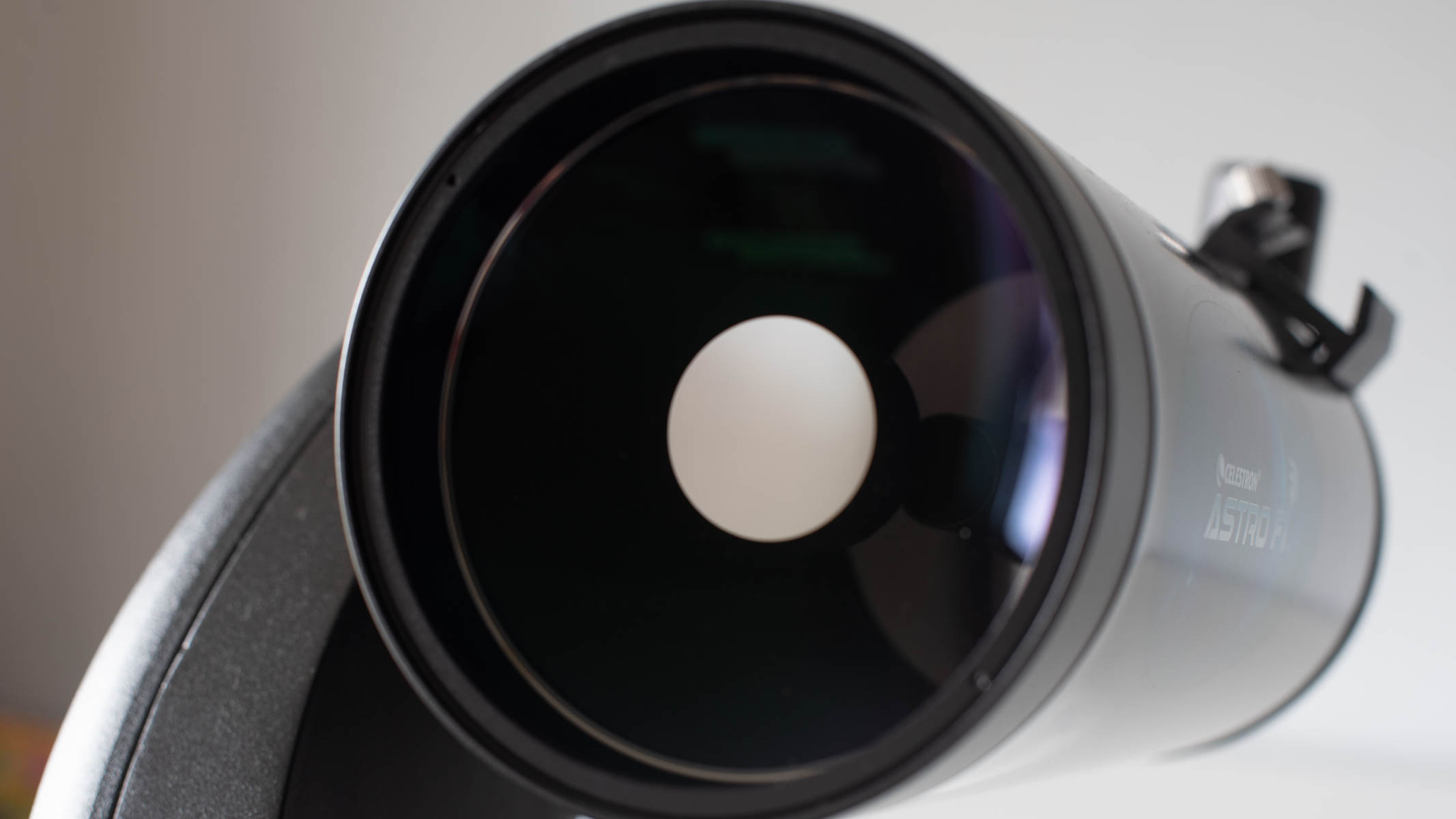
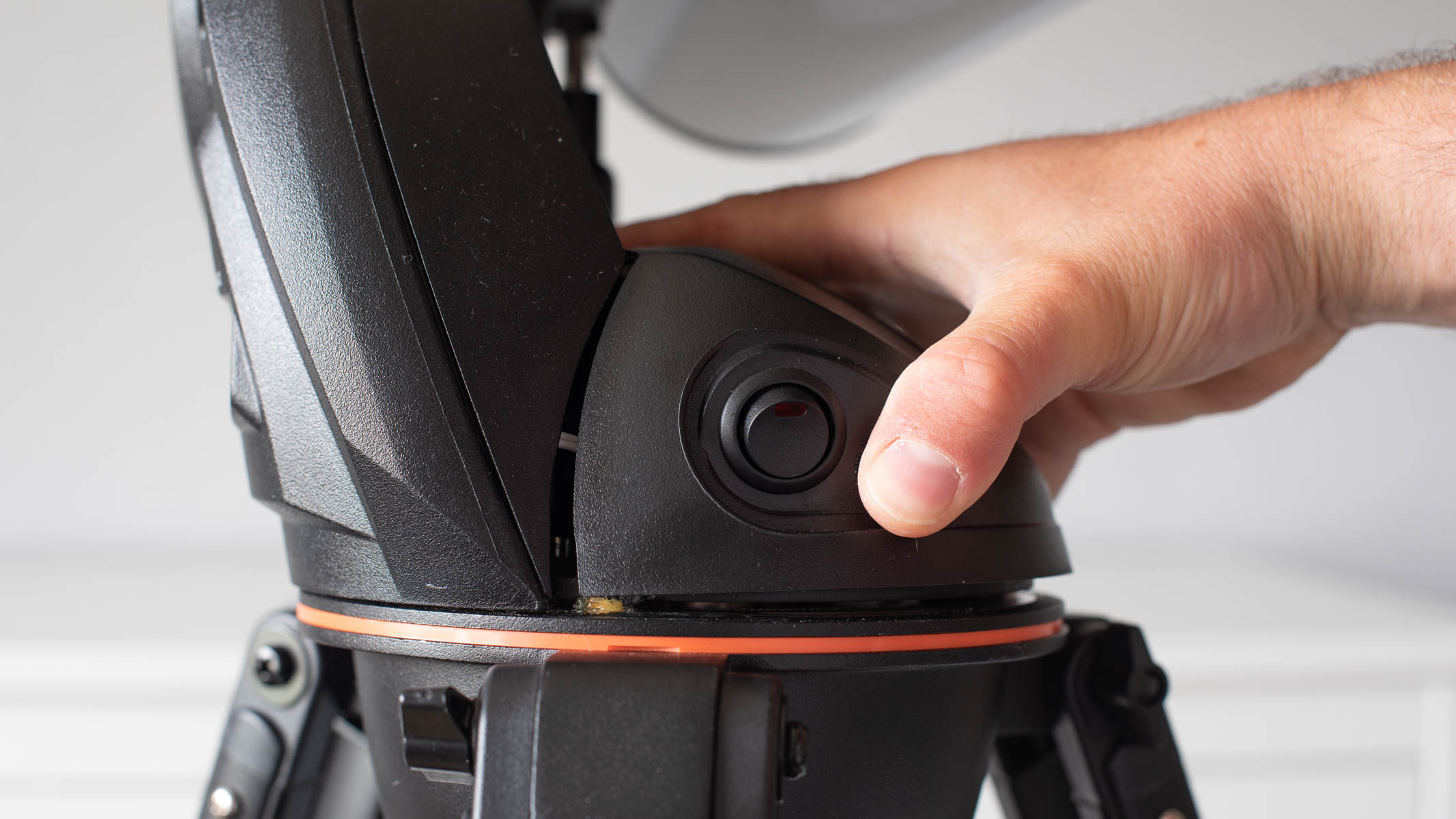
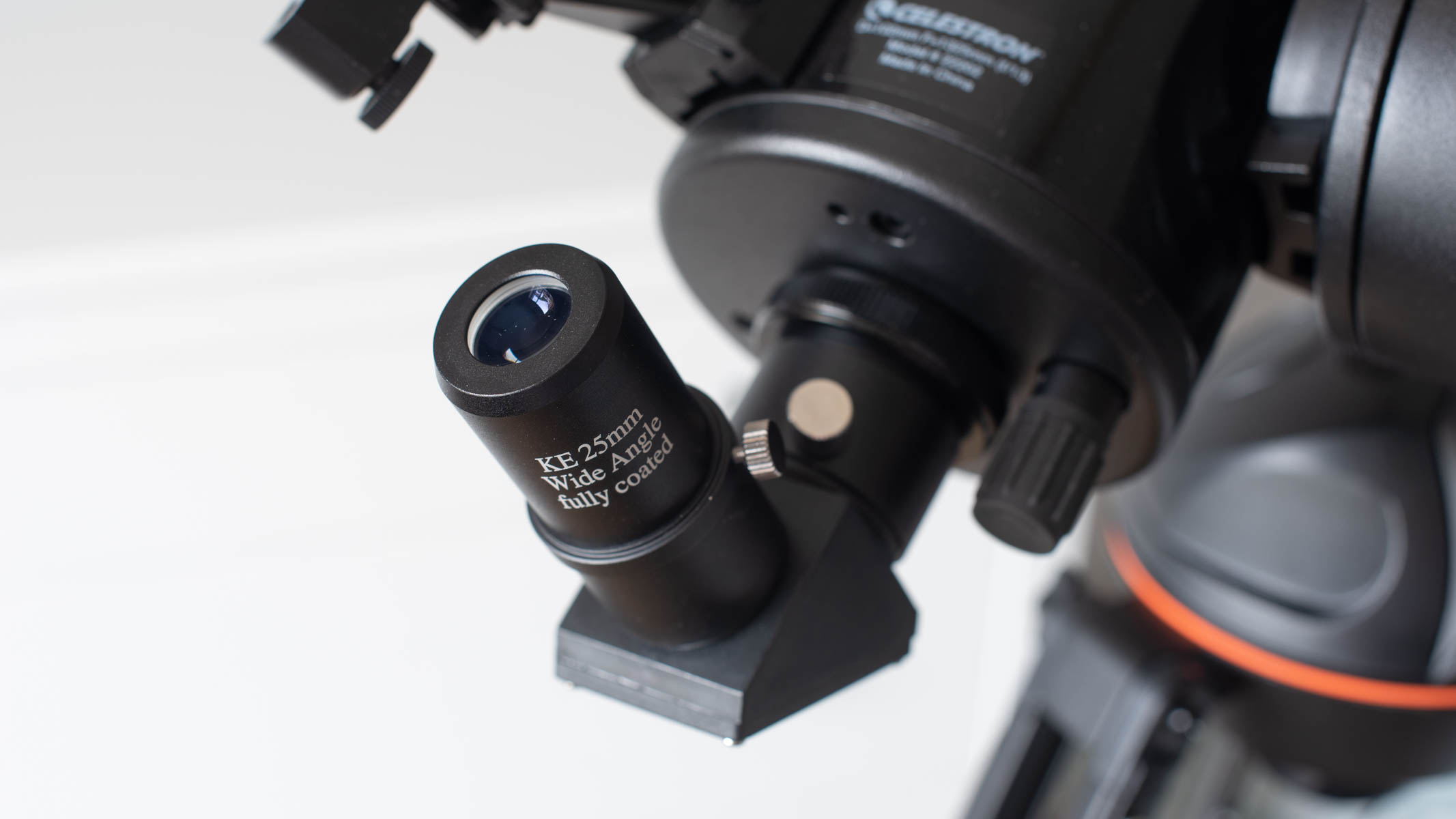
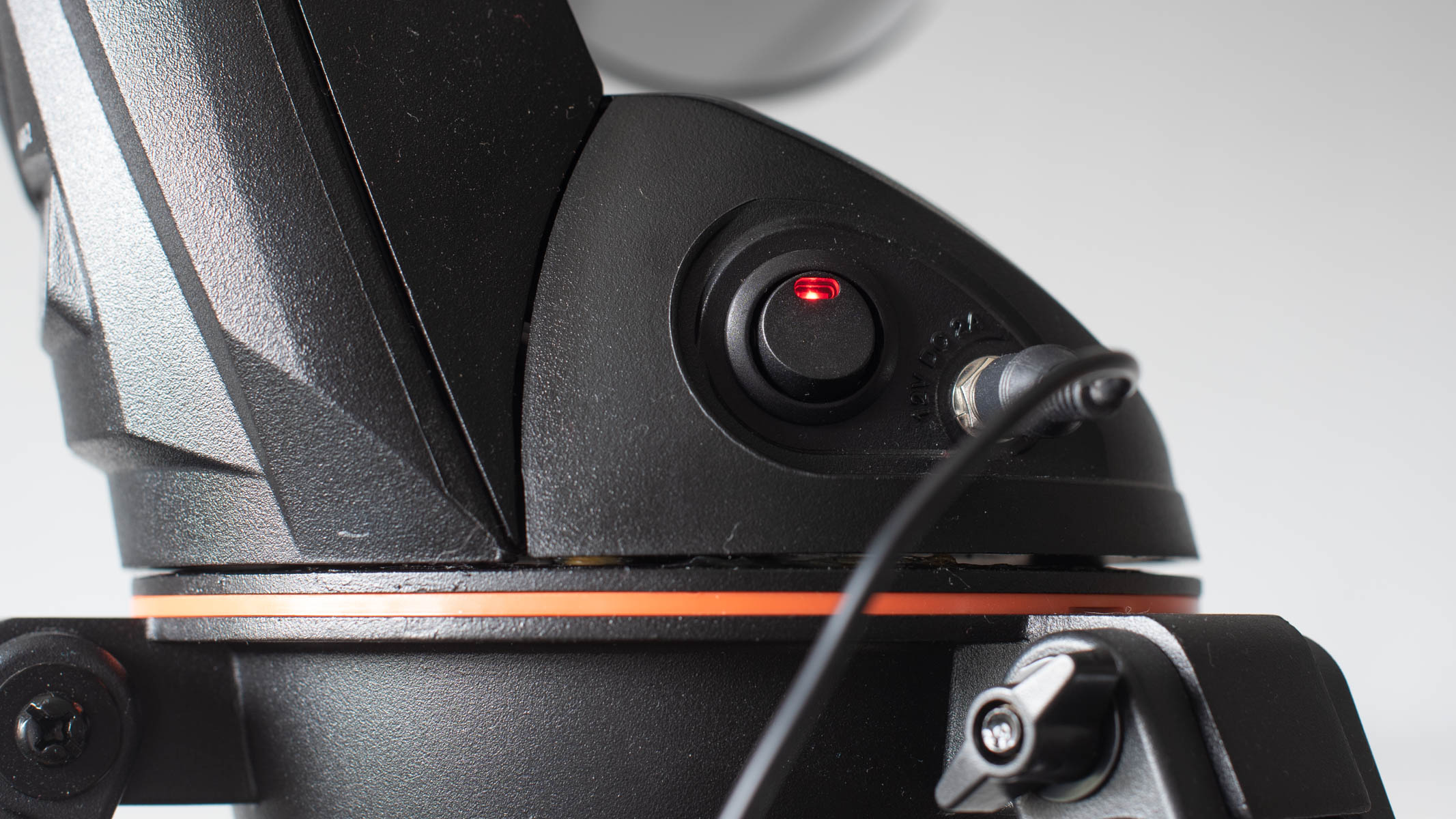
Specifications
Reasons to buy
Reasons to avoid
✅ You want something lightweight and easily portable: Weighing 16 lbs (7.25 kg), it's easy to transport to dark sky locations.
✅ It's your first telescope: It has its drawbacks, but we think it's a decent computerized option as a first GoTo telescope.
❌ You're an experienced astronomer: This telescope is more suited to beginners and enthusiasts — we'd recommend the Celestron NexStar Evolution 9.25 if you want the best advanced telescope.
❌ You want excellent optics and build quality: We noted that the optical quality wasn't the best, and the tripod was a little flimsy. If you want to splurge on the best, we'd recommend the Celestron NexStar 8SE.
🔎 Celestron Astro Fi 102: A no-frills telescope best suited toward lunar and planetary observing. The motorized mount may take some time for beginners to get set up but it comes in at a reasonable price offering fair views of the night sky. ★★★½
Beginners often find telescopes a little intimidating if they have no prior knowledge of the night sky or how to find anything when looking through a telescope — that's where GoTo telescopes come in. With this technology, the telescope will automatically slew (move) to certain celestial objects visible in the night sky, opening them up to anyone new to the hobby who may not be sure what night sky subjects to look at. This technology tends to be found in pricier scopes, but the Celestron Astro Fi 102 is one of the best affordable GoTo telescopes on the market.
Design: While keeping in mind that this is a telescope primarily designed for beginners, we found during our Celestron Astro Fi 102 review that some elements of the design left a little to be desired. We didn't think the build quality was that great, the casing was flimsy and the tripod wasn't particularly stable — but these are all design flaws that you shouldn't find on the more expensive intermediate or advanced scopes, so there's an element of 'it comes with the territory' here.
One design element we did enjoy, however, is just how lightweight it was. Weighing just 16 lbs (7.25 kg), which is one of the lightest options in this guide, you can easily pack it up into a backpack and take it to a dark-sky spot.
Performance: We thought the Celestron Astro Fi 102 provided, good, clear views of planets, although unsurprisingly the images were a little soft around the edges of the frame (which is to be expected at this price). The views are reasonable, nothing groundbreaking but it's a useful telescope if all you want to view is craters on the moon or Saturn's rings. If your viewing conditions are dark enough, we think you'd also get away with viewing some nebulas and other deep-sky objects, but again, you'll need to manage your expectations when it comes to image quality.
The Astro Fi 102 is controllable via an app on a smart device (including iPhone, iPad and Android) that can be conveniently strapped to the integrated smartphone holder on the dust cap. Then, it's just a case of tapping into the app to decide which celestial object you want to see and the telescope will automatically slew to the target using an in-built motor in the fork arm mount. We thought the slew rate was acceptable, and overall it did a pretty good job of navigating through the night sky quietly.
Functionality: It's powered by 8 x AA batteries, and while we do think it's a pain having to repurchase batteries, having a rechargeable battery will increase the cost of the telescope significantly, and considering this is a telescope that would likely be replaced once you've outgrown your beginner status, it's something we can forgive. Besides, you could just invest in some rechargeable batteries.
We thought the WiFi connection was pretty solid and worked well with the SkyPortal app. There were some other little niggly things to be aware of which we mentioned in our review, but overall we think it'll serve you well if it's your first telescope, or if you're buying for a younger stargazer.
- Read our full Celestron Astro Fi 102 review
Attributes | Notes |
|---|---|
Design | Lightweight, but build quality isn't great. |
Performance | Fair views in the center of the image circle. |
Functionality | Simple controls make it a dream to use. |
Best smart telescope
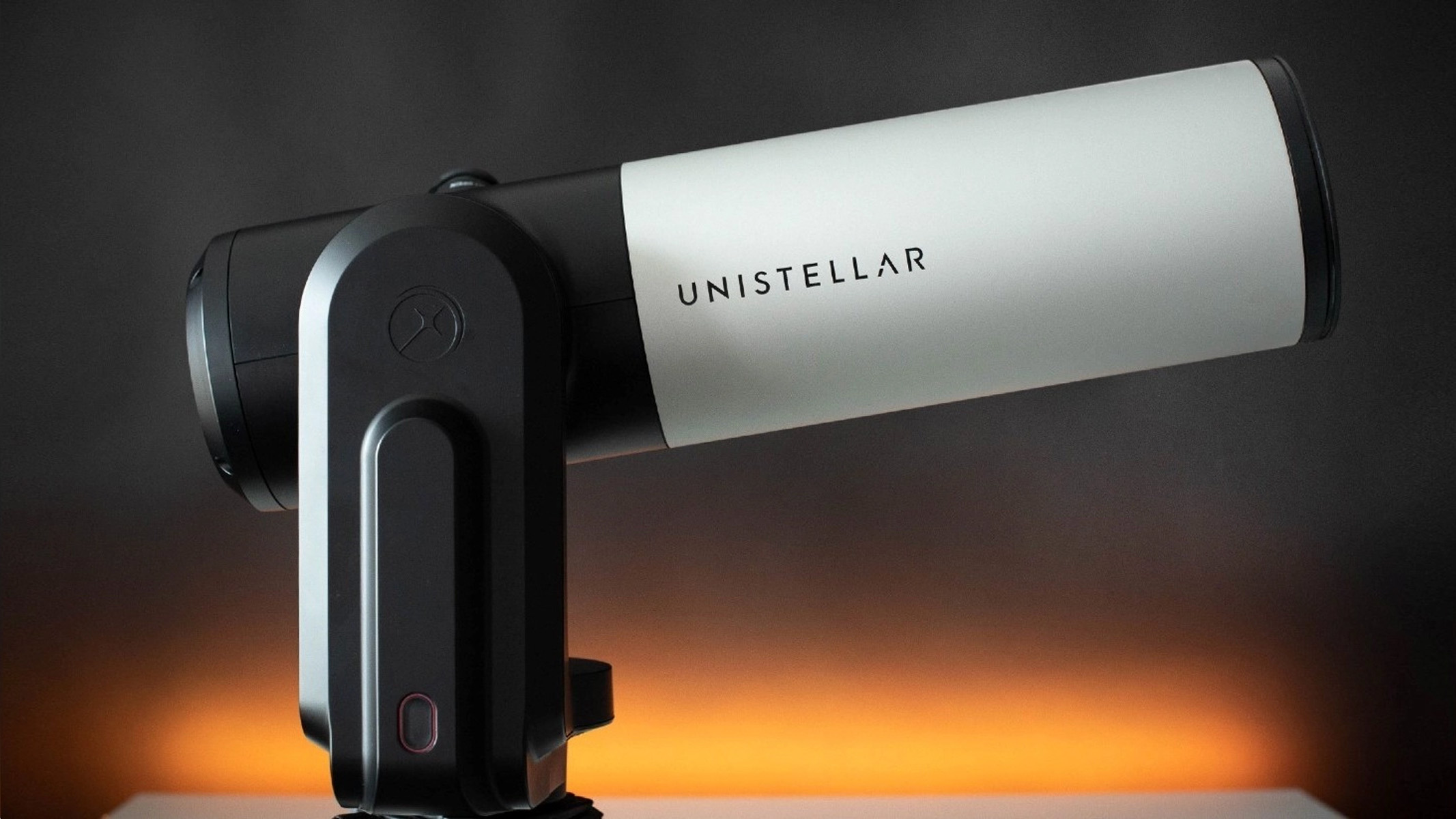
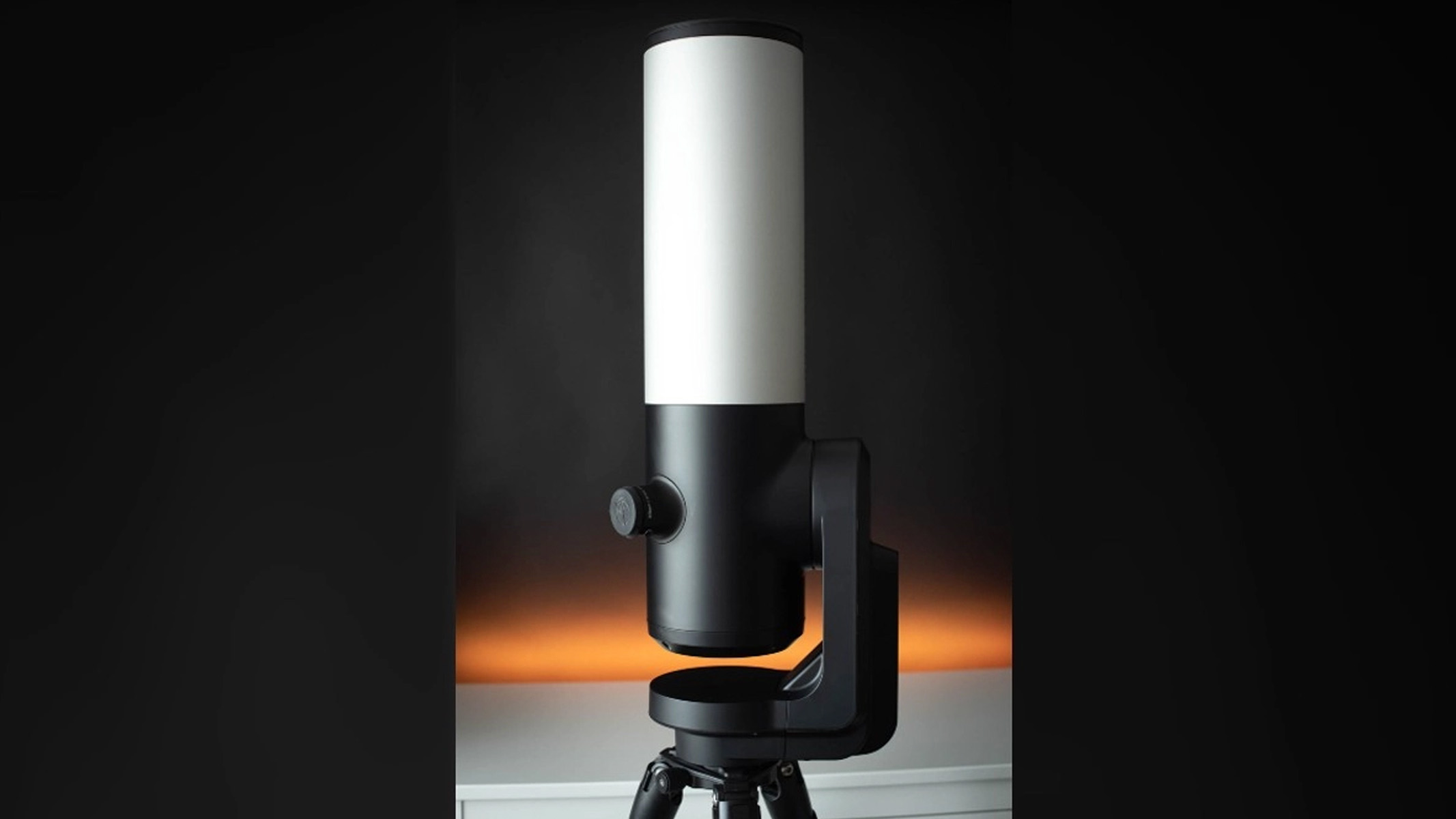
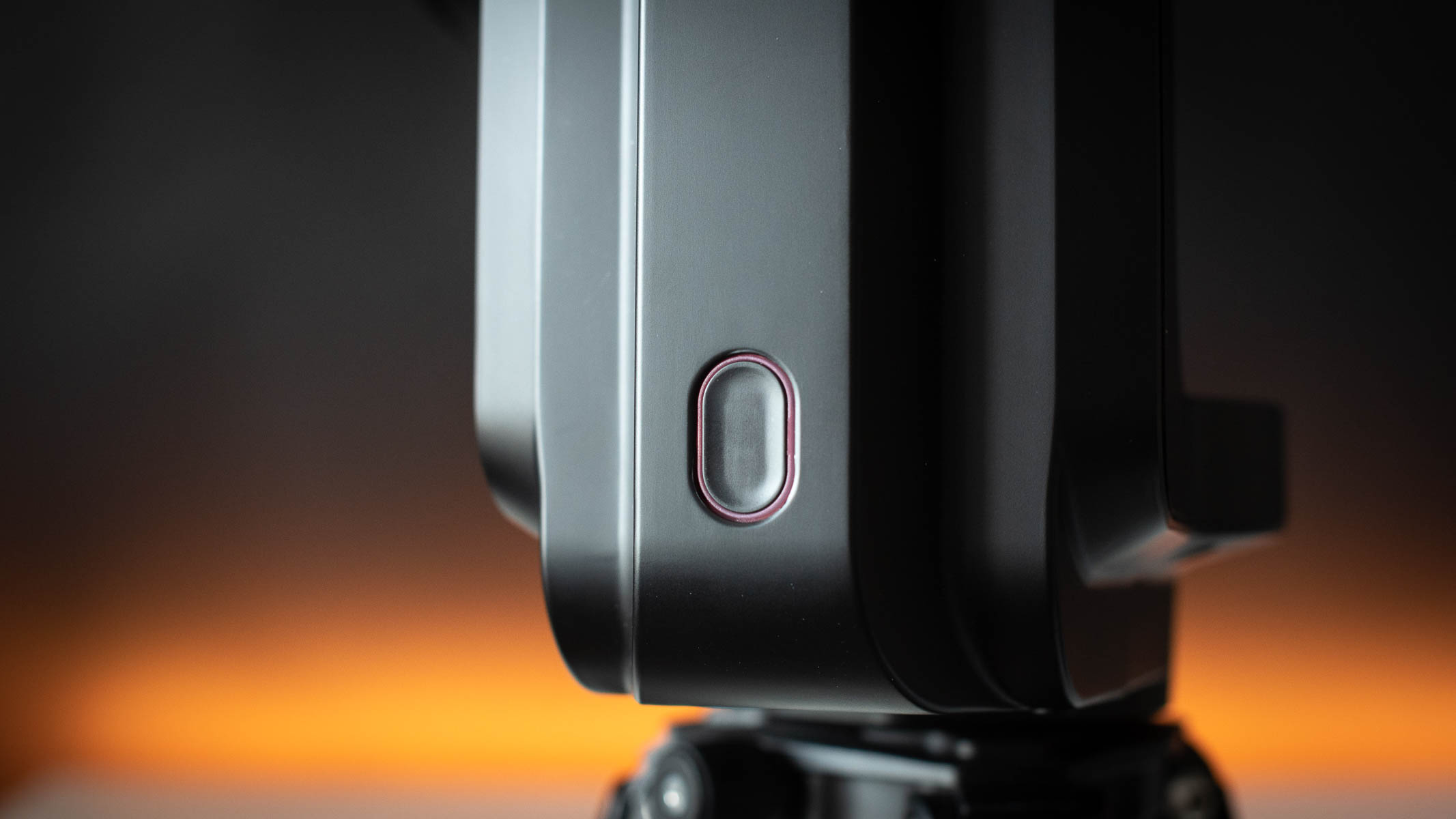
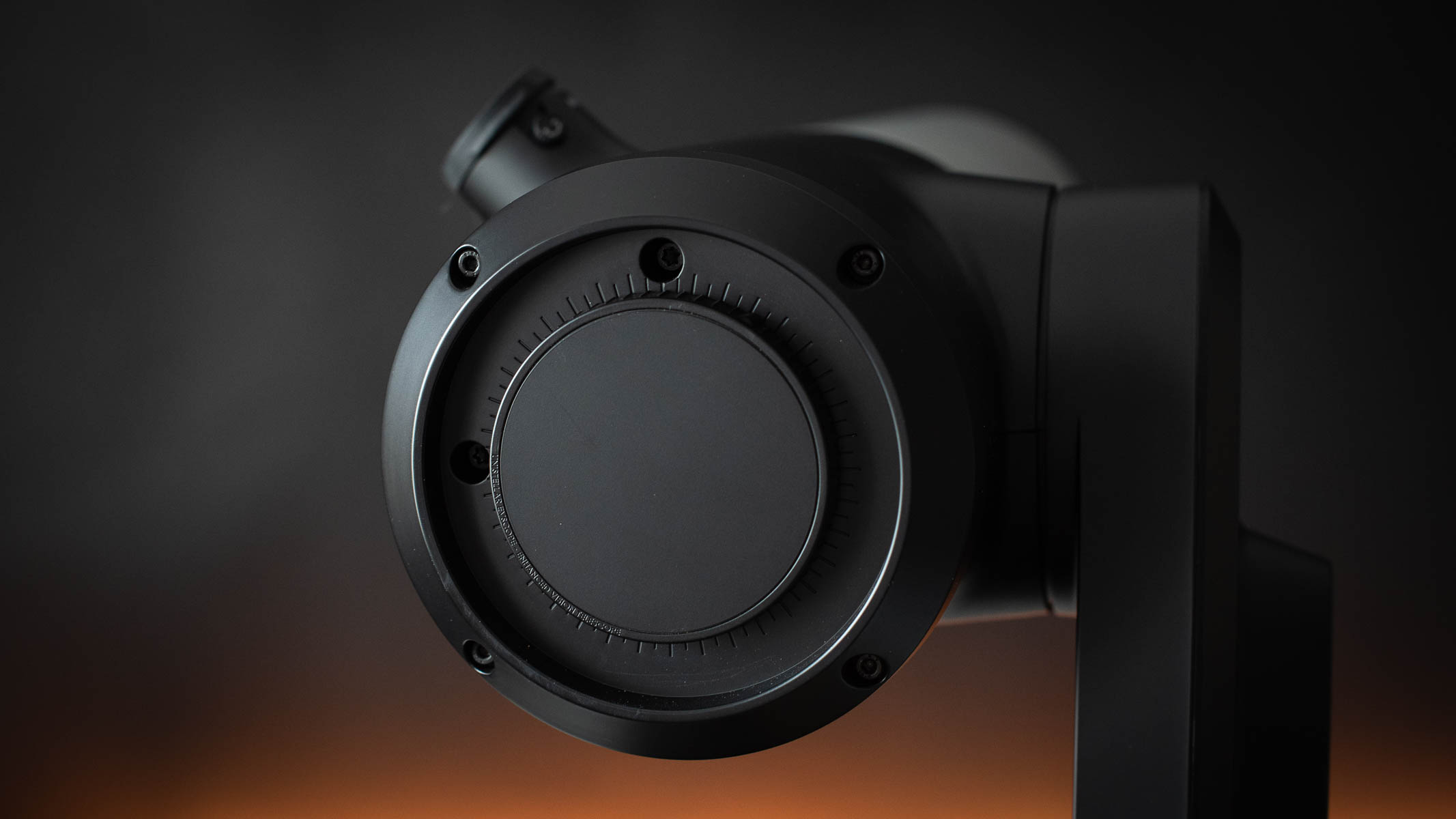
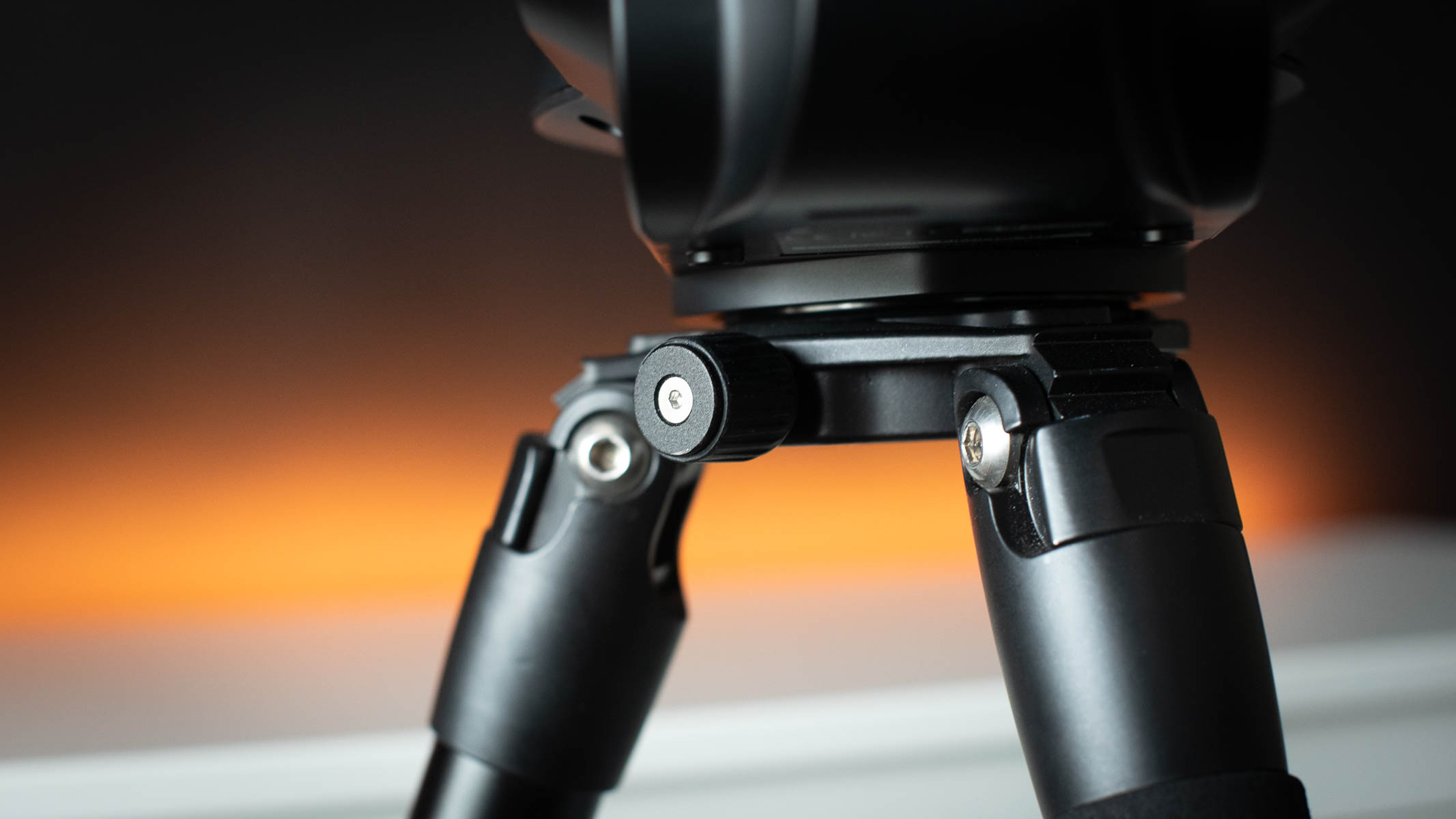
Specifications
Reasons to buy
Reasons to avoid
✅ You want simplicity: With a sleek, premium design, easy to use app and just a single button to press on the scope itself, you can't go wrong.
✅ You like tech: Smart telescopes are full of impressive tech to play around with.
❌ You don't have a big budget: It's particularly expensive, even for a smart telescope. For a budget-friendly smart telescope, check out the Vaonis Vespera II.
❌ You're more traditional: Purists may miss using an eyepiece, changing mounts or adding a Barlow lens.
🔎 Unistellar eVscope 2: Unistellar has clearly put a lot of thought into every aspect of the eVscope 2’s design, and every inch feels and looks high quality and premium. Its 7.7MP sensor captures breathtaking images of the cosmos and effortlessly gives users a tour of the heavens. ★★★★½
The recent smart telescope revolution has introduced a whole new level of technology for stargazing. These telescopes have expansive databases, and can automatically locate and move to specific celestial objects and provide information about each object, plus photograph each subject itself. If you want the best of the best, we think you'll love the Unistellar eVscope 2.
Design: This beautiful-looking telescope from Unistellar is the second in the eVscope line and comes with a boost in specifications and function. It sports a sleek, minimalistic design with just a single button and looks and feels like a work of art. It's easy to set up and mount, as is the case with most smart telescopes, and it comes with its own tripod and an additional backpack (which we recommend purchasing) making it easy to carry it around to dark-sky locations.
Performance: Everything on it is automatic, from set-up to imaging and anyone can use it because it requires no prior knowledge of constellations or the night sky. We were incredibly impressed with it during our Unistellar eVscope 2 review and found its movements to be fast and smooth. It can automatically identify stars and constellations and the app will suggest subjects based on your location and time, then automatically slew to them with the press of a button on the screen.
Even for users in cities and urban areas with lots of light pollution, it's capable of revealing hidden stars that you'll usually only see in remote dark sky areas.
Functionality: Most smart telescopes have a drawback for traditional astronomers who prefer using an eyepiece because they don't have one, instead, the telescope is viewed through a smartphone or tablet via an app. However, this wonderful-looking telescope has a micro OLED digital eyepiece developed by Nikon and it captures 7.7MP stills photos of the cosmos with image-enhanced options available through the smart device app.
- Read our full Unistellar eVscope 2 review
Attributes | Notes |
|---|---|
Design | Unique, minimalist design good for all astronomers. |
Performance | Manual telescope control via the app is speedy. |
Functionality | Features a micro OLED digital eyepiece developed by Nikon. |
Best budget smart telescope
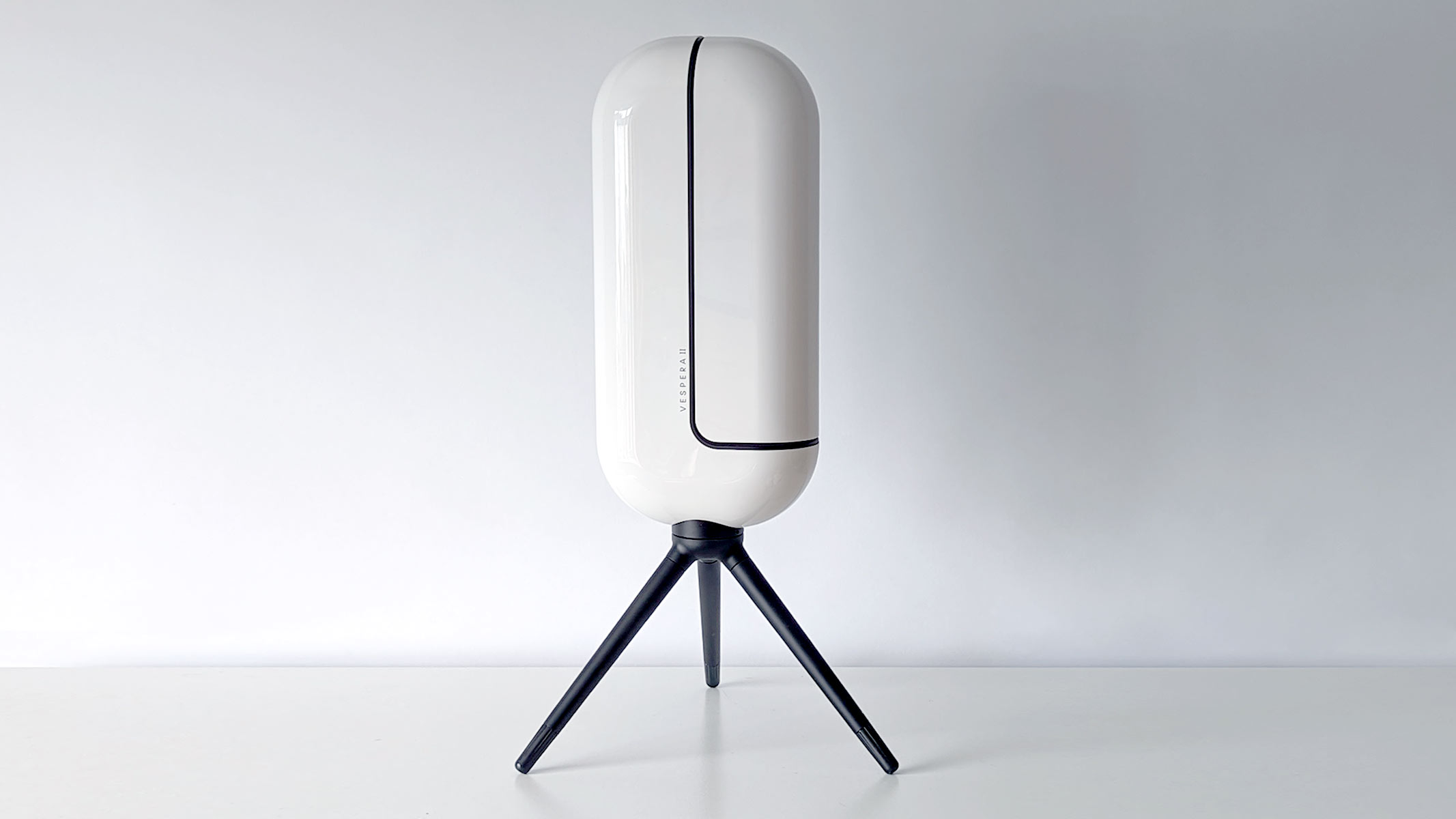
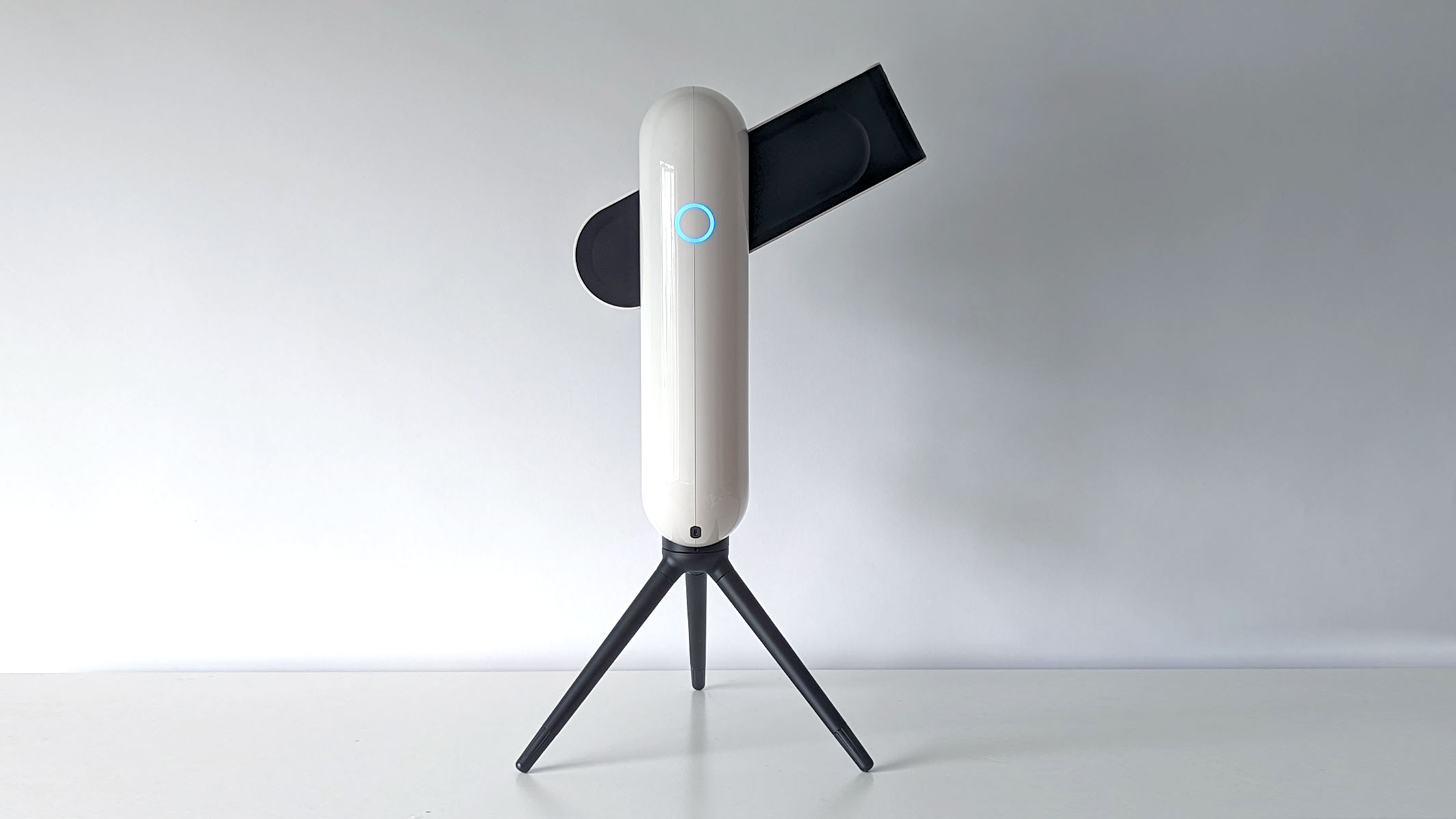
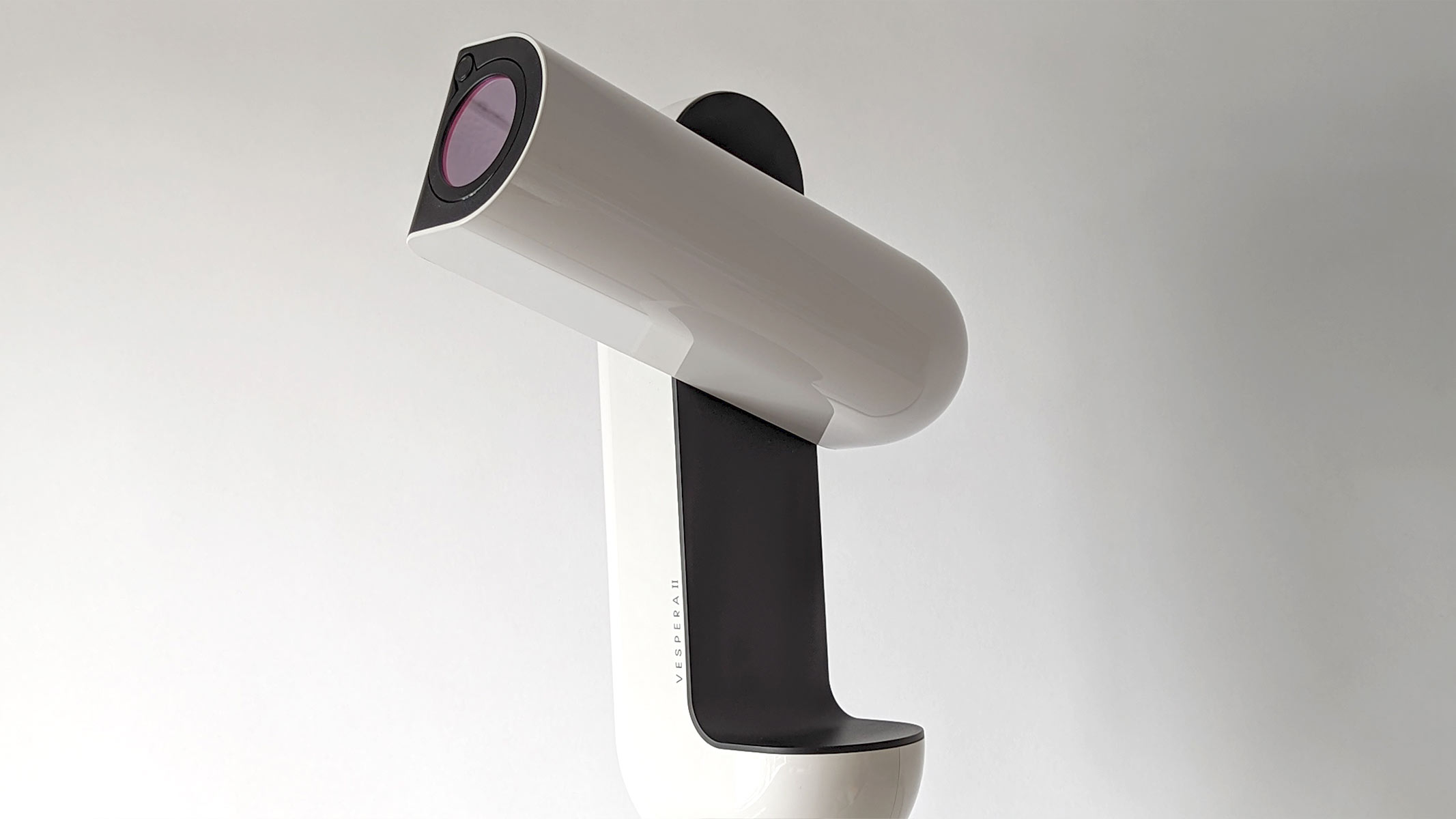
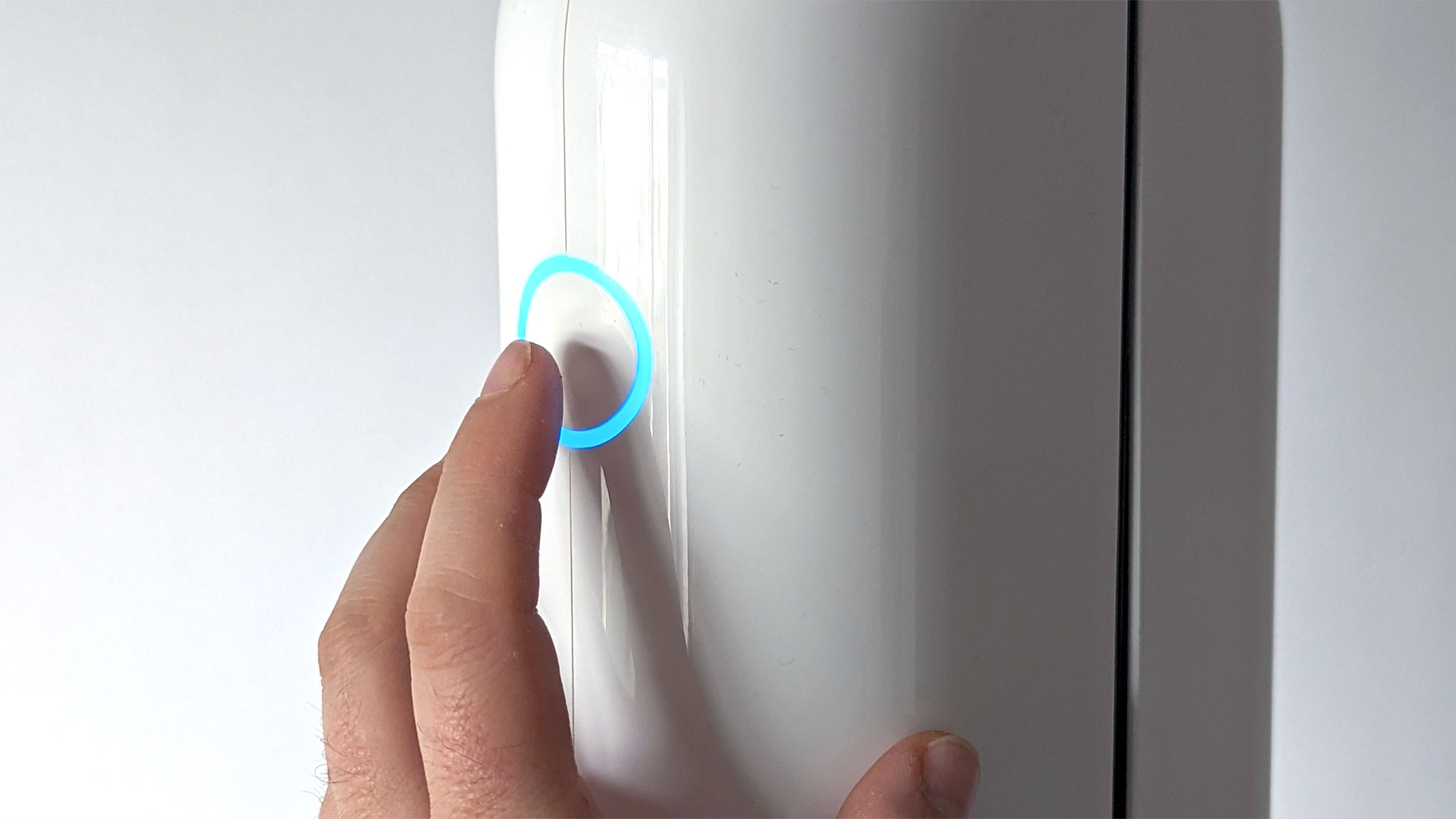
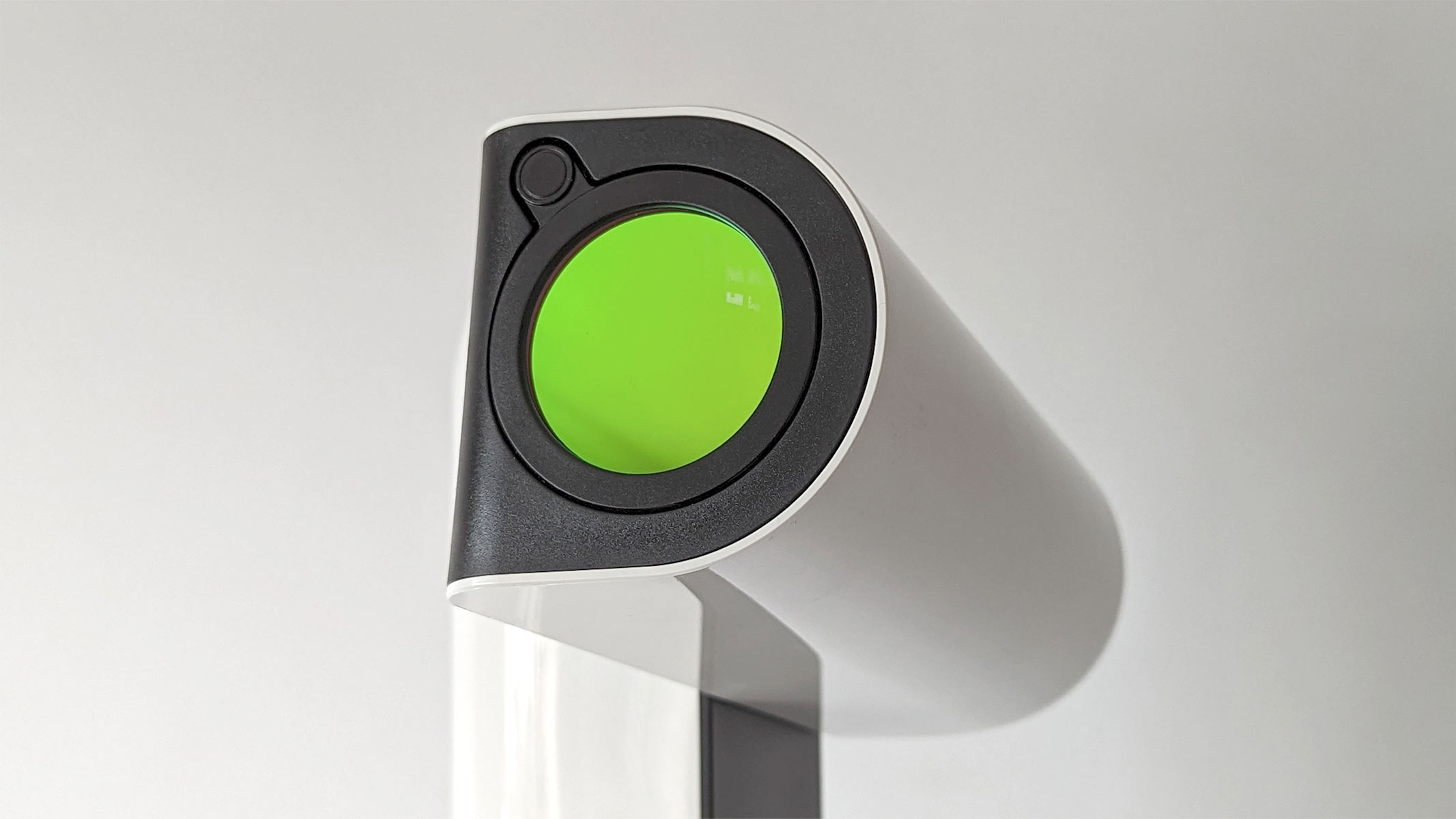
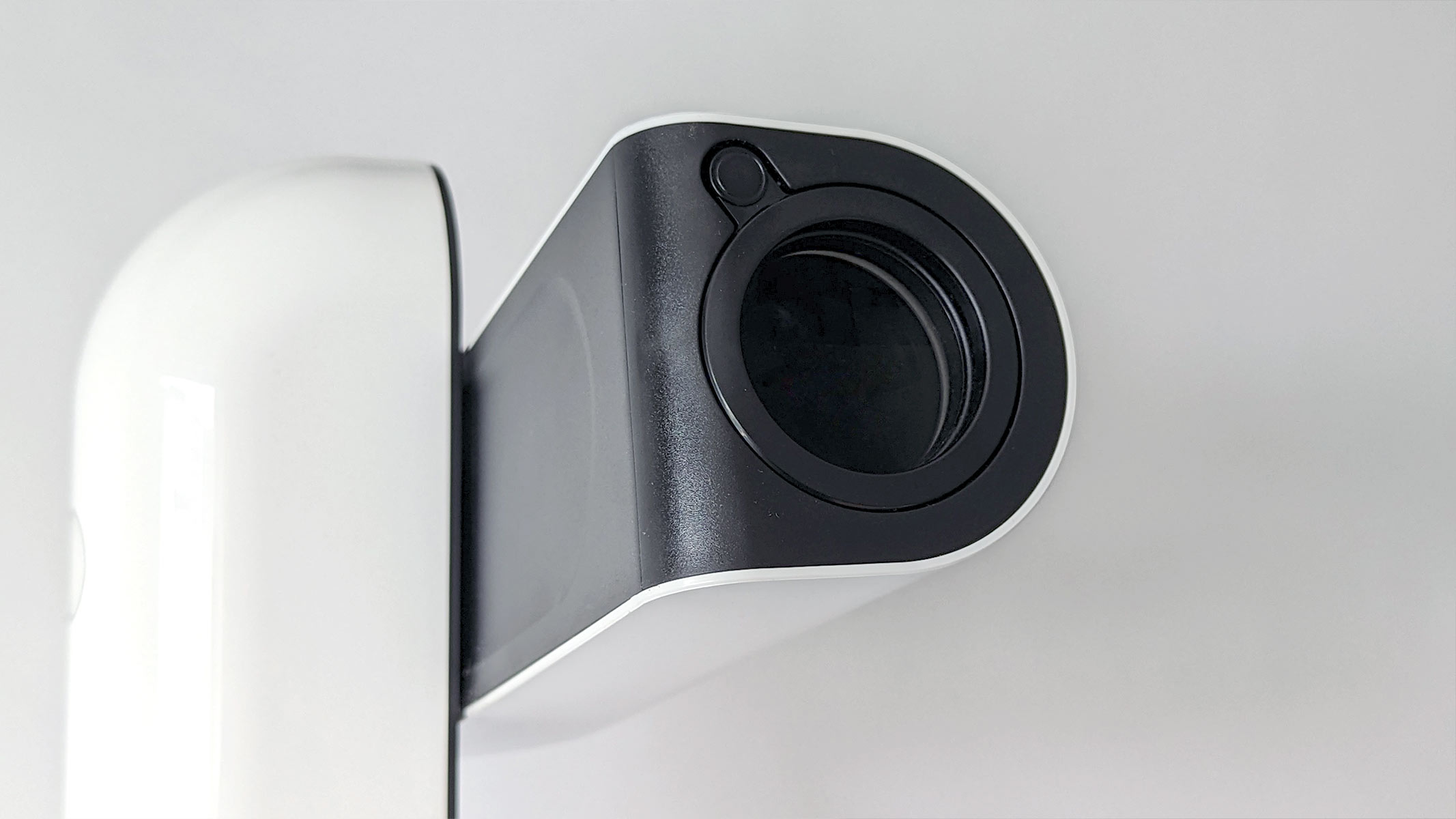
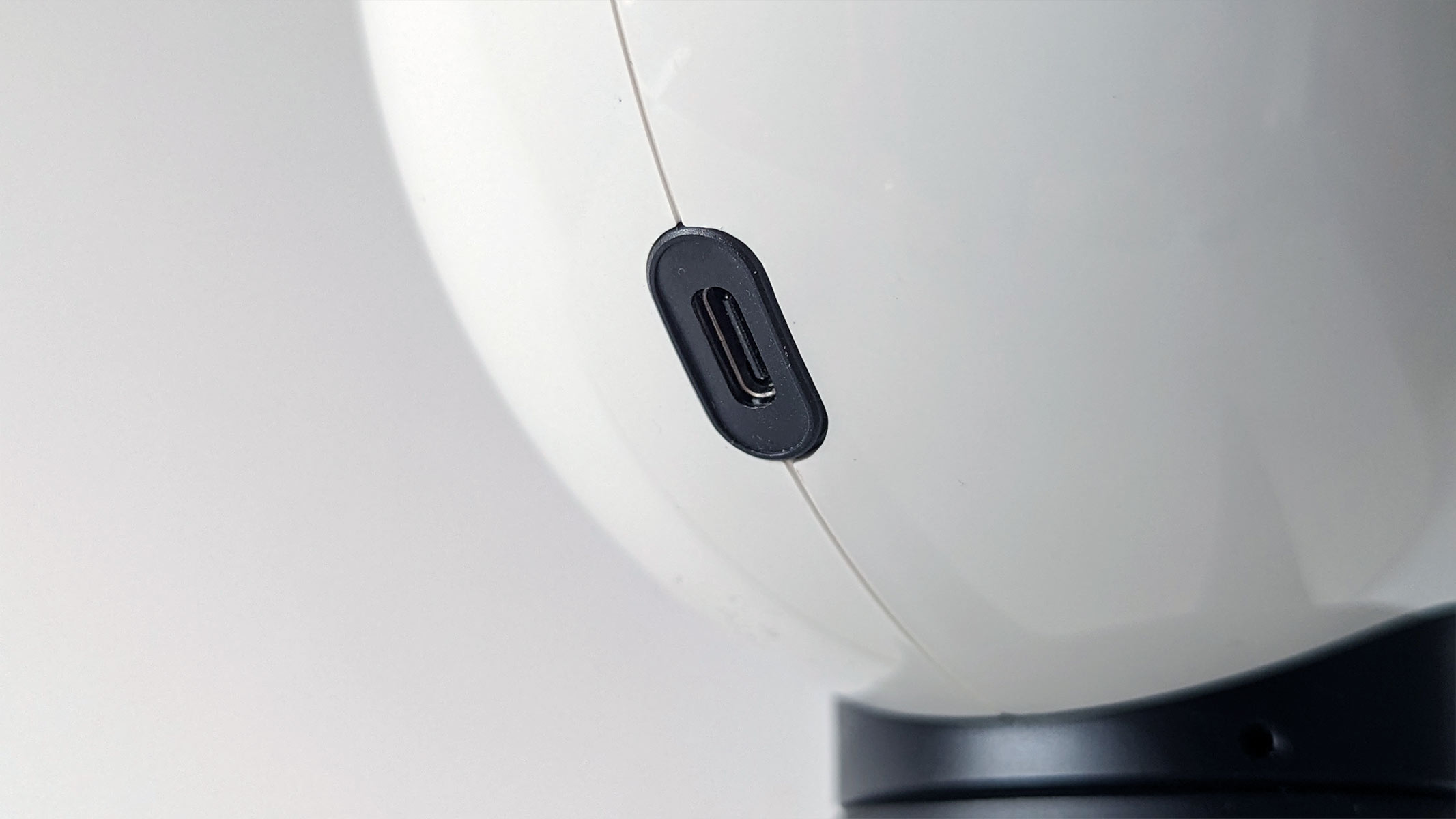
Specifications
Reasons to buy
Reasons to avoid
✅ You want to travel with it: It's small, lightweight and incredibly easy to put together, making it ideal for traveling to dark sky locations.
✅ You don't have any astronomy experience: Being fully automated, you don't need any prior knowledge of the sky or telescopes, as a smart telescope does the hard work for you.
❌ You want to view planets or the moon: We found the focal ratio and image resolution were too small to get any meaningful observations of planets or the moon. For that, we'd recommend the Sky-Watcher SkyMax 180 Pro.
❌ You want to do long sessions: The 4-hour battery life isn't bad, but if you want to stargaze all night long, there are better options. The original Vaonis Vespera has an 8-hour battery life.
🔎 Vaonis Vespera II: The best budget smart telescope you can buy right now by a long shot, we think the Vaonis Vespera II outperforms its competitors at all ends of the price spectrum. However, the app's user interface could use some tweaking. ★★★★★
If a smart telescope sounds like your kind of thing but you don't have a huge budget to play with, the Vaonis Vespera II could be just what you're looking for. We gave it full marks in our Vaonis Vespera II review, and we were thoroughly impressed by its build, image quality and overall ease of use for any and every user.
Design: Like pretty much all smart telescopes, we found it ridiculously easy to set up and use with just the push of a single button. It sports a sleek, minimalist design and is lightweight enough to pack away and take with you to dark-sky locations.
The exterior of the telescope is bright, glossy white with a rotating telescope arm and a tripod connection at the bottom, a single on/off power button and a USB-C connection for charging. It's pretty much identical to the original Vaonis Vespera.
Performance: When it comes to performance and image quality, we thought it outperformed many of the more expensive smart telescopes. The images of galaxies and nebulas were stunning — which is even more impressive when you consider that we used it with a streetlight just 100 yards away. That said, we did find it a little disappointing to get any particularly detailed observations of the moon and planets.
The images are 8.3MP standard, which is the best resolution of any smart telescope as it is, but Vaonis' patented Live Mosaic capture can boost the resolution to a massive 24MP — amazing news for astrophotographers.
Functionality: The battery life could potentially be an issue if you plan on using the Vespera II for long observation sessions, but we think 4 hours should be plenty for most users — especially beginners. That said, you can always pair it with one of the best power banks if you want to stargaze for longer. Another thing to note is that the Singularity App controls the whole thing, so you can't browse the internet while you use the telescope. Again, not the biggest dealbreaker, but it could get a little annoying.
Overall, we think it's ideal for beginners with a healthy budget and even for experienced telescope users who want a grab-and-go option to eliminate the need to fiddle around with the setup of more traditional scopes. It isn't perfect, but we wouldn't hesitate to recommend it.
- Read our full Vaonis Vespera II review
Attributes | Notes |
|---|---|
Design | Sleek, minimalist design that is easy to transport. |
Performance | Incredible views of galaxies and nebulas, even in cities. |
Functionality | Live Mosaic capture can boost images to 24MP. |
Best telescope for seeing planets
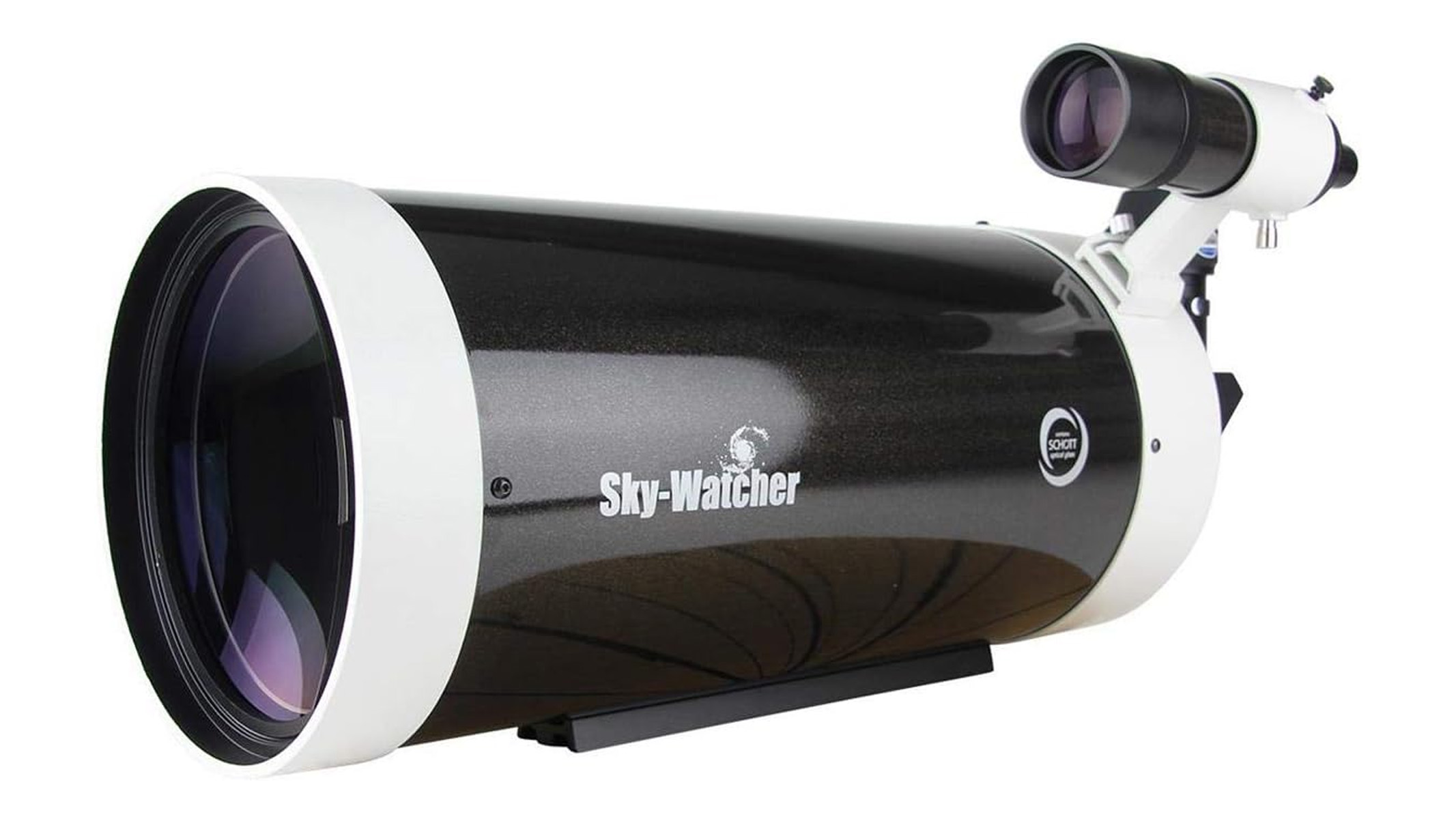
Sky-Watcher SkyMax 180 Pro
Our expert review:
Specifications
Reasons to buy
Reasons to avoid
✅ You want exceptional optics: It provides stunning views of the moon and planets that will take your breath away.
✅ You want to do astrophotography: You can capture images of the moon and planets in our solar system, and it's also capable of deep-sky imaging.
❌ You're a beginner: It doesn't ship with a mount or tripod, so it would be best suited for more experienced users. Beginners would get on better with something like the Celestron Inspire 100AZ.
❌ You want a smart telescope: For more tech for your money at a similar price, we'd recommend the Vaonis Vespera II, although it's not as good for planetary views.
🔎 Sky-Watcher SkyMax 180 Pro: An outstanding instrument for planetary and lunar viewing that can also turn its hand to deep-sky objects. Aimed at seasoned astronomers, it's a fantastic option to consider as an upgrade from your beginner scope. ★★★★½
For lunar and planetary viewing, you can't go far wrong with the Sky-Watcher Skymax 180 Pro, and it also gives decent views of some of the brighter deep-sky objects, too.
Design: Known as a 'planet-killer', its 180mm aperture is perfect for bright and contrasty views of the planets in our solar system, and the views of the moon, in particular, are exceptional.
It's also one of the more lightweight options on this list, so it'd easily make a great 'grab and go' telescope able to be transported to remote dark-sky locations for better views.
Performance: It's a worthy contender when it comes to astrophotography. There's next-to-no chromatic aberration, coma or distortion that'll need to be fixed in editing software, and the images are crisp and sharp throughout the frame. You'll also get pleasing images of some of the brighter deep-sky objects with long-exposure photography, particularly if you take multiple images and stack them together, although planetary and lunar imaging is where it really comes into its own, with some users reporting that it feels like Jupiter had been transported into their own backyard.
Functionality: One potential issue worth noting is the cool-down time. This can take anywhere between 90 minutes to 3 hours in order to image or observe at an ambient temperature, but this will also depend on whether you store your telescope in a warm or cool environment. If it's stored in a secure outhouse, it'll take less time to cool than if you keep it inside a warm house.
Attributes | Notes |
|---|---|
Design | 180mm aperture is perfect for bright and contrasty views. |
Performance | Exceptional views of the solar system. |
Functionality | Long cool-down time. |
Best telescopes: comparison
| Row 0 - Cell 0 | Optical design | Aperture | Focal length | Focal ratio | Eyepiece/s | Total kit weight | Mount type |
Celestron NexStar 8SE | Schmidt-Cassegrain | 203.2mm (8-inch) | 2032mm (80-inch) | f/10 | 25mm | 24 lbs (10.88kg) | Computerized Alt-azimuth |
Celestron Inspire 100AZ | Refractor | 100mm (3.94-inch) | 660mm (25.98-inch) | f/6.6 | 10mm, 25mm | 20 lbs (9.07kg) | Alt-azimuth |
Celestron NexStar Evolution 9.25 | Schmidt-Cassegrain | 235mm (9.25-inch) | 2,350mm (92.52-inch) | f/10 | 13mm, 40mm | 62.60 lbs (28.39kg) | Computerized Alt-azimuth fork arm |
Celestron Astro Fi 102 | Maksutov-Cassegrain | 102mm (4.02-inch) | 1325mm (52.17-inch) | f/13 | 10mm, 25mm | 16 lbs (7.25kg) | Computerized Alt-azimuth |
Celestron AstroMaster 130EQ | Newtonian Reflector | 130mm (5.11-inch) | 650mm (25.6-inch) | f/5 | 10mm, 20mm | 26.5 lbs (12kg) | Equatorial including R/A motor drive for object tracking |
Unistellar eVscope 2 | Reflector | 114 mm (4.5-inch) | 450 mm (17.7-inch) | f/3.9 | micro OLED | 19.8 lbs (9kg) | Alt-azimuth |
Vaonis Vespera II | Refractor | 50mm (2-inch) | 250mm (9.84-inch) | f/5 | N/A | 12.96 lbs (5.87kg) | Computerized GoTo Alt-azimuth |
Celestron Advanced VX 8 Edge HD | Schmidt-Cassegrain | 203.2mm (8-inch) | 2032mm (80-inch) | f/10 | 40mm | 61 lbs (27.67kg) | German equatorial, computerized, with servo motors |
Sky-Watcher SkyMax 180 Pro | Maksutov-Cassegrain | 180mm (7.09-inch) | 2700mm (106.3-inch) | f/15 | 28mm | 17.2 lbs (7.8kg) | Alt-azimuth |
Contributing experts & product testers

Josh Dury Photo-Media AKA 'Starman' is an Award-Winning Landscape Astrophotographer, presenter, speaker and writer from the United Kingdom. His images have been recognized by NASA, APOLLO 11, ESA, TWAN, BBC & CBS amongst others, and he has partnered with Sigma, Benro and NiSi.
Josh has contributed to our FAQs, and reviewed the Celestron Inspire 100AZ in this guide.

Jase Parnell-Brookes is the Managing Editor for e-commerce for Live Science and Space. Previously the Channel Editor for Cameras and Skywatching at Space, Jase has been an editor and contributing expert across a wide range of publications since 2010. Based in the UK, they are also an award-winning photographer and educator, winning the Gold Prize award in the Nikon Photo Contest 2018/19 and named Digital Photographer of the Year in 2014. After completing their Master's degree in 2011 and qualifying as a teacher in 2012, Jase has spent the last two decades studying and working in photography and publishing in multiple areas, and specializes in low light optics and camera systems.
Jase has reviewed the Celestron NexStar 8SE, Celestron Astro Fi 102, Unistellar eVscope 2 and the Vaonis Vespera II in this guide.
Best telescopes FAQ
What is the best telescope overall?
For our money, we'd recommend the Celestron NexStar 8SE as the best telescope overall due to its excellent optical clarity, powerful focal length, top-class customization and durable build quality.
What is the best telescope for beginners?
We think the Celestron Inspire 100AZ is the best telescope for beginners who are happy to invest in a refractor. Its easy operation is due to its simple, camera lens-like design and Alt-azimuth mount that is fast to get observing with and provides sharp views of the moon and planets.
How much should I spend on my first telescope?
However much you like! We'd typically recommend spending between $300 - $1,000 on your first telescope — not just because beginners don't tend to want to spend as much, but if you don't know how telescopes work and what kind of telescope you enjoy using, you don't want to spend thousands on a certain scope only to discover you don't like it.
What is the best thing to look at with a beginner telescope?
Beginner telescopes with 4 or 5-inch apertures are great for viewing the planets in our solar system, our Moon, Saturn's rings and Jupiter's moons. Observing planets further out can be tricky with this size telescope, but it's not impossible.
We asked award-winning astrophotographer Josh Dury, who said"You don't need an expensive telescope to see some amazing views of the night sky. All that's required is a smaller 4-inch diameter telescope to begin your astronomical journey through the cosmos. With one of these, you will be able to see the lunar craters, the surface details of Mars, Jupiter and Saturn and further afield to the Andromeda galaxy (M31) and the Orion Nebula (M42)."
What is the best smart telescope?
For those with the budget we'd recommend the Unistellar eVscope 2 because it can be operated by anyone with the compatible smartphone app and it takes amazing astrophotographs right from your phone.
Do I need a computerized telescope?
Technically, no. As long as you are happy to manually slew the telescope to the next night sky object and use your knowledge of the stars to navigate (or use a proprietary stargazing app that comes with the telescope) then a non-computerized telescope is fine. However, computerized telescopes are motorized and can be programmed to find specific celestial objects with a controller or smartphone app which makes it faster and more accurate for beginners.
Which is better for astronomy — telescopes or binoculars?
While some of the best binoculars for stargazing are undoubtedly powerful, optically proficient and specifically designed for astronomy, they are limited in terms of customization and aren't ideal for viewing smaller objects.
Telescopes, therefore, are much more suited to those that have the aforementioned requirements. However, they lack a stereoscopic view.
What type of telescope should I buy?
As a beginner, it can be a bit of a minefield trying to figure out the difference between the different types of telescopes.
Refractors are commonly better for entry-level observers because their construction and operation are slightly more similar to how a camera lens works and most new observers are used to taking pictures.
Reflectors offer greater reach in shorter bodies, though they are typically wider in diameter and can take a little longer to set up (collimate).
Catadioptrics are a hybrid between the two types above which means they are small but have fantastic reach. They tend to cost much more though and may be out of the budgets of many just getting started.
Dury said: "There are telescopes tailored to all sorts of celestial objects. The general rule of thumb is a larger diameter telescope for the planets in order to revolve greater light-gathering, and a smaller telescope to provide a smaller field of view for larger galaxies and nebulas. However, that is not always the case, as larger telescopes can be used for observing more distant galaxies, nebulas and star clusters."
What telescope is best for viewing planets?
We think the best telescope for viewing planets is the Sky-Watcher SkyMax 180 Pro, often referred to as a 'planet killer', but the best overall Celestron NexStar 8SE is also fantastic for planetary viewing.
We asked our contributing expert, Josh Dury, and he said "You need much larger telescopes to view planets. Yes, they are more of an investment — but it is all to do with light-gathering capability and magnification. Although, a lot depends on your atmospheric viewing conditions to use such magnifications. With these, the Cassini division on Saturn (the gap between the rings) will be much more apparent. Mars — expect to see the polar ice caps and recognized surface features. Jupiter — you will be able to resolve texture within the weather patterns that band the planet."
What size telescope do you need to see galaxies?
The more light-gathering power a telescope has, the better it'll be for seeing galaxies. Generally, we'd recommend a telescope with an aperture of at least 8 inches (200mm) — although scopes with larger apertures of 10 inches and more will achieve even better results.
Josh Dury said "For deep space viewing, you'll want a much wider telescope. These telescopes need to provide a nice wide field of view to resolve more light from these subjects. Although a lot will depend on the viewing location and varying amounts of light pollution, these telescopes will present those 'faint glowing cloud' subjects with far greater detail and may be possible to resolve structure within the arms of recognized galaxies and nebula structures."
Also tested
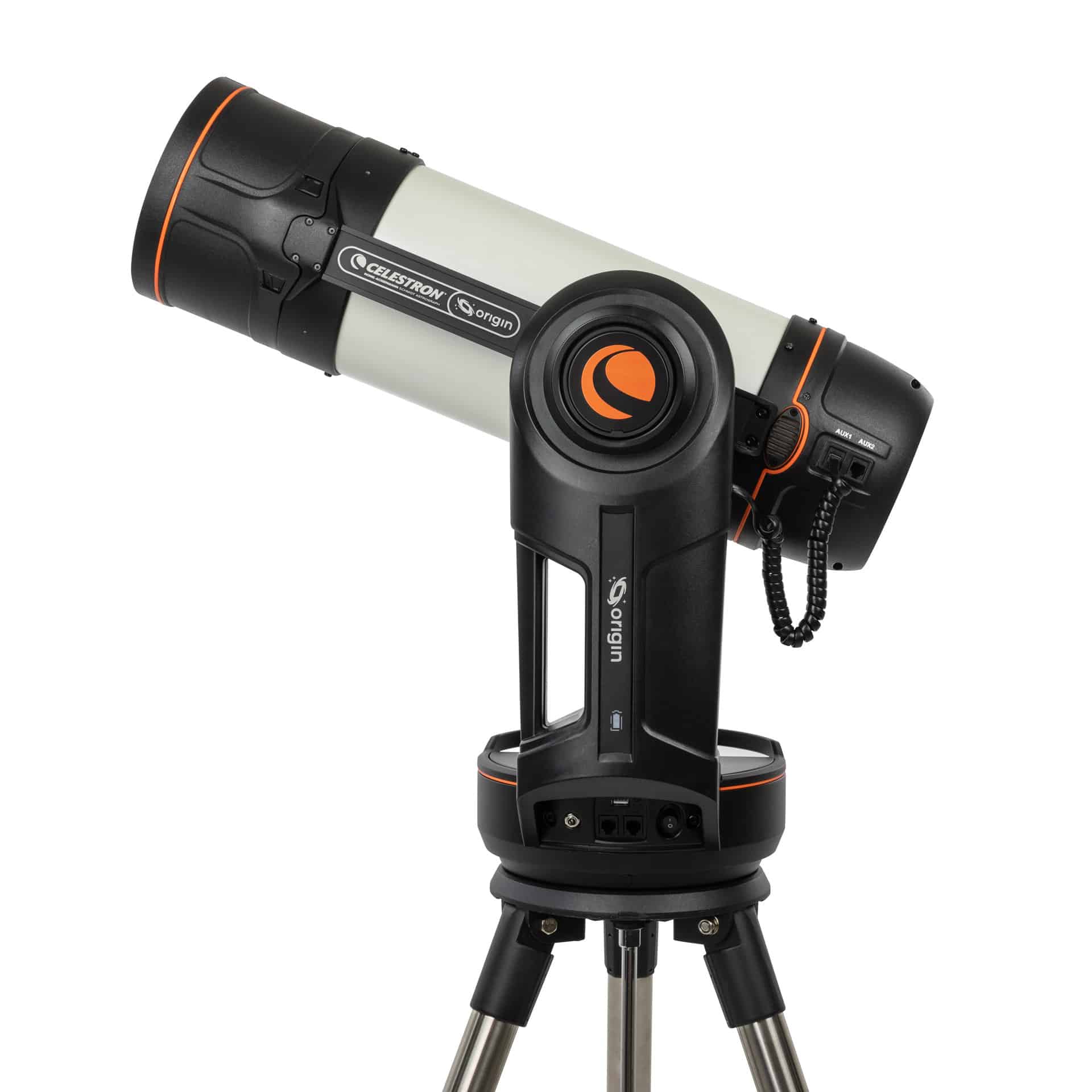
An "intelligent home observatory", this telescope is easy to set up and a cinch to use thanks to being fully automated. It's expensive and heavy, but it takes absolutely stunning photos of the night sky.
Read our full Celestron Origin review.
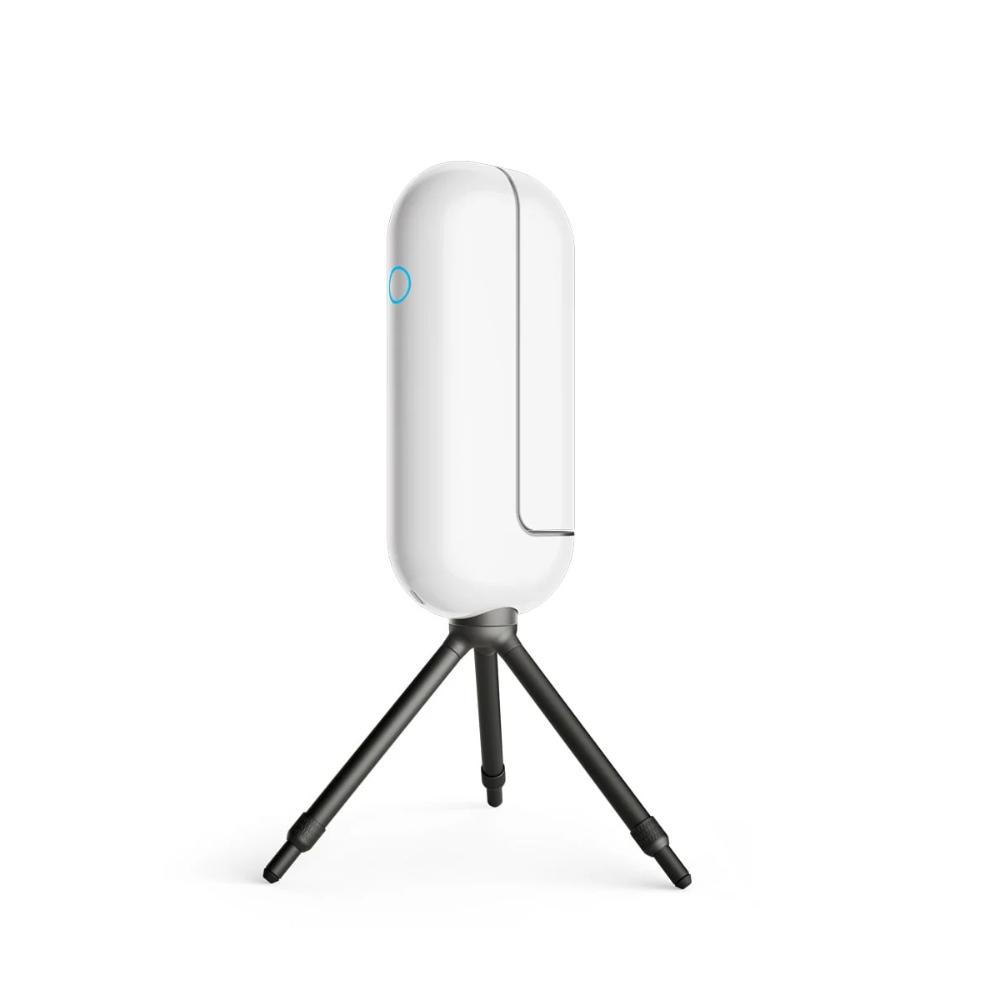
It's still expensive, but here's a great smart telescope which we think is suited to beginners. It's a joy to use, provides images of the night sky almost instantly, and is easy to use as a group of up to 8 people.
Read our full Vaonis Vespera review.
Latest updates
November 3, 2025: Added November stargazing events.
How we test the best telescopes

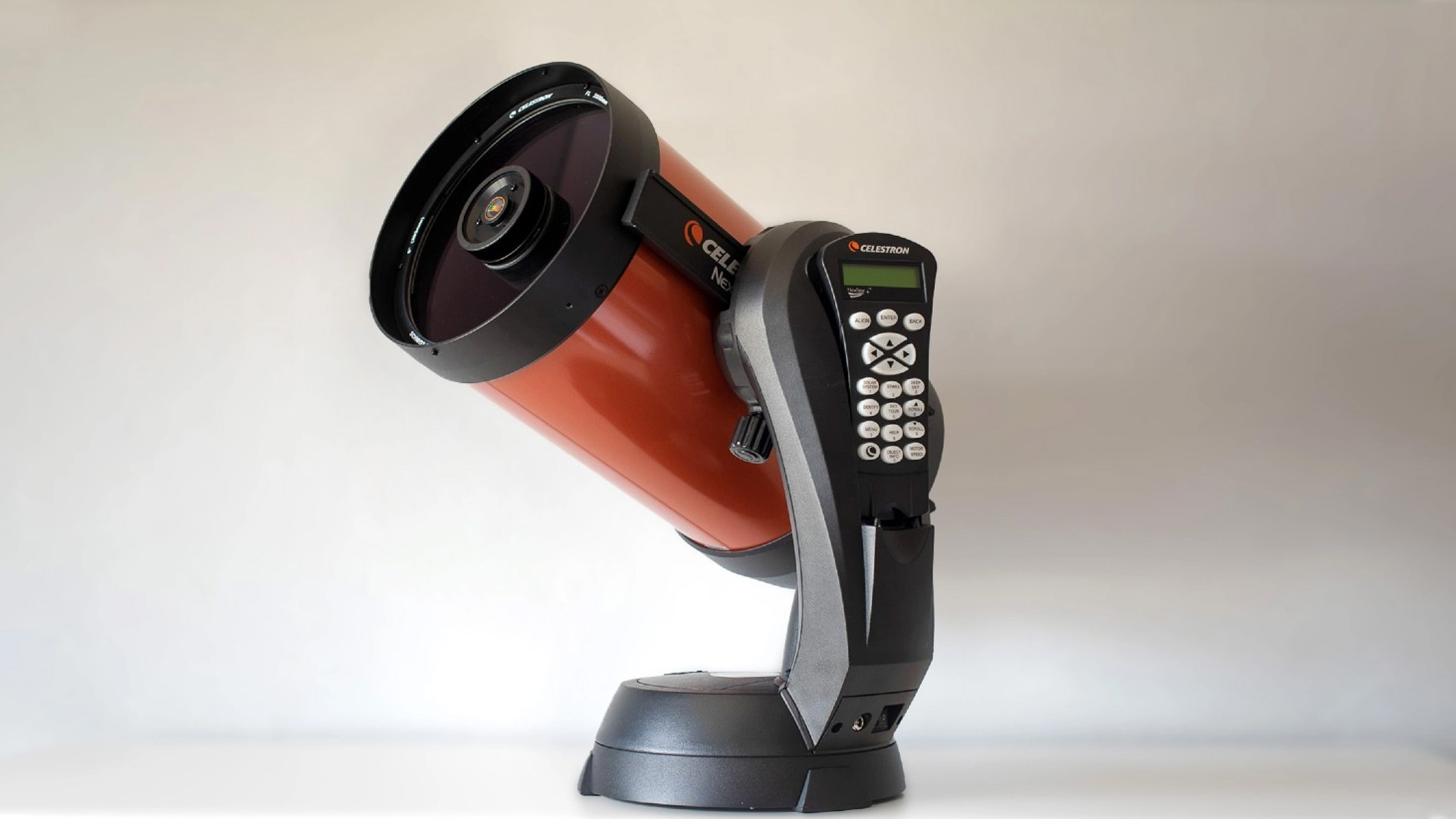



Best telescopes
Best smart telescopes
Best small telescopes
Best telescopes for kids
Best binoculars
Best binoculars for stargazing
Best image-stabilized binoculars
Best astrophotography cameras
Best beginner astrophotography cameras
Best binoculars for kidsBest star projectors
Best power banks
Best cameras for wildlife photography
To give readers the best buying advice, our experienced staff or freelance testers thoroughly review these telescopes in real-world situations to provide accurate, hands-on and unbiased reviews of their performance and functionality.
We use the telescopes in a range of conditions and locations, from the reviewer’s backyard to remote dark sky sites, noting any signification light pollution and whether the moon phase affects visibility. We look at its design and build, assessing the setup from start to finish, including how easy it is to assemble and disassemble, whether it’s user-friendly and the quality of the materials of the telescope and its accessories.
Once the telescope is set up, we look at the sharpness and quality of the image across the entire field of view, check for any defects like color fringing, look at its slewing accuracy while on location and assess how well it performs overall as an optical instrument. When reviewing smart telescopes, we’ll thoroughly test all their features and usability with any accompanying apps, noting how well the app works and crucially, whether it crashes!
We assess how the specs of each telescope affect its light-gathering power and what kind of celestial objects it’s suitable for viewing (lunar/planetary or deep sky), and taking the mount and optical design of the telescope into consideration so we can recommend it for a certain type of user.
Get the world’s most fascinating discoveries delivered straight to your inbox.

Jase Parnell-Brookes is the Managing Editor for e-commerce for Live Science and Space. Previously the Channel Editor for Cameras and Skywatching at Space, Jase has been an editor and contributing expert across a wide range of publications since 2010. Based in the UK, they are also an award-winning photographer and educator winning the Gold Prize award in the Nikon Photo Contest 2018/19 and named Digital Photographer of the Year in 2014. After completing their Master's degree in 2011 and qualifying as a teacher in 2012, Jase has spent the last two decades studying and working in photography and publishing in multiple areas, and specializes in low light optics and camera systems.
- Kimberley LaneE-commerce writer


